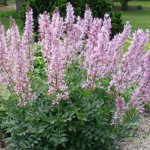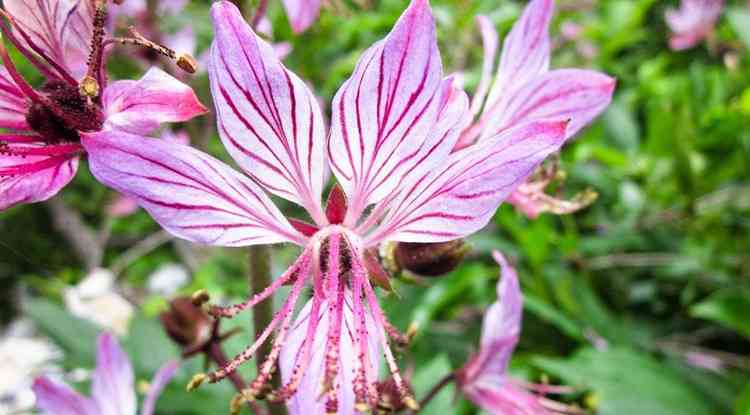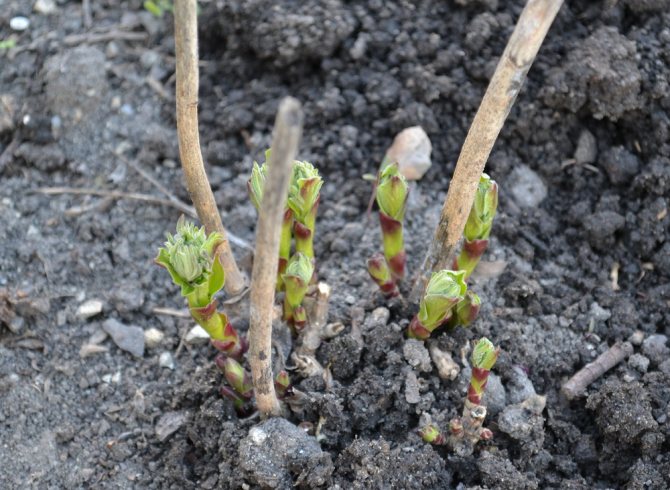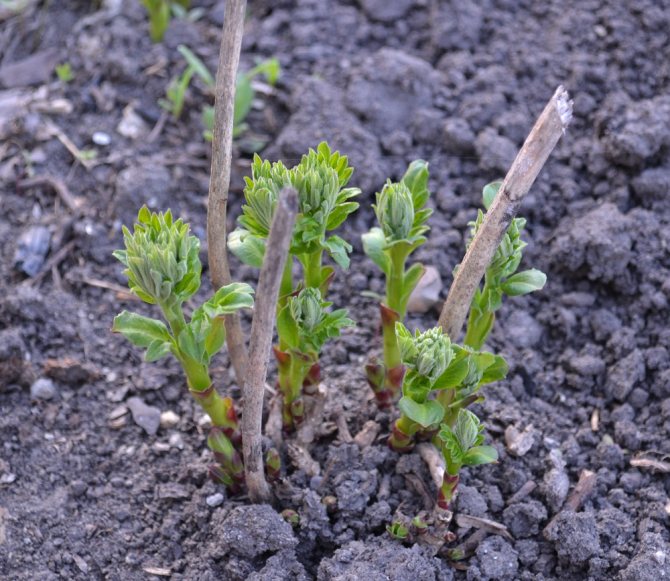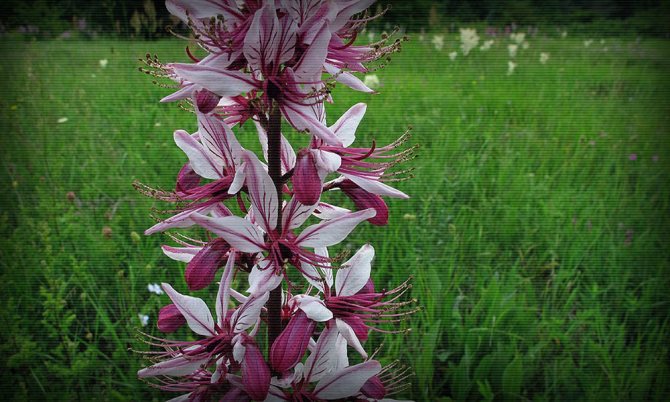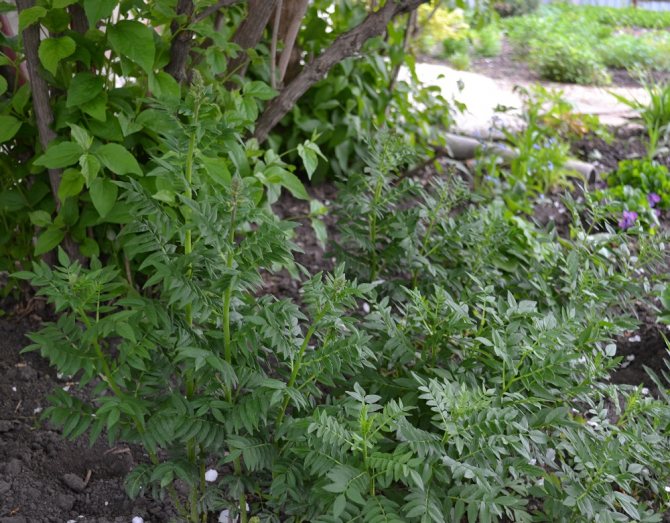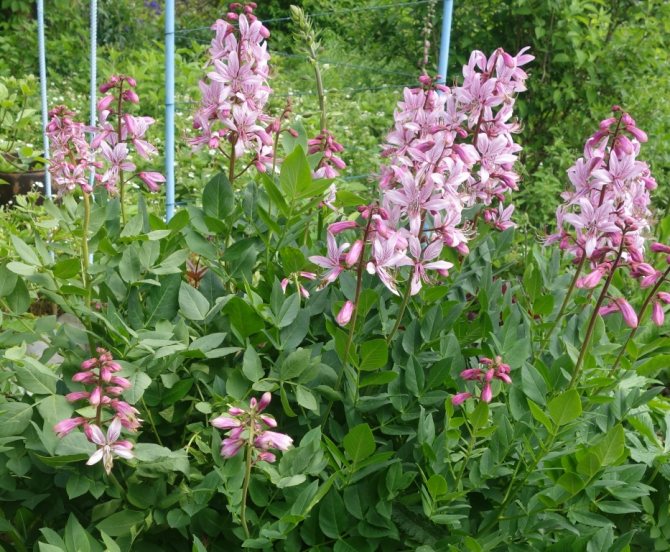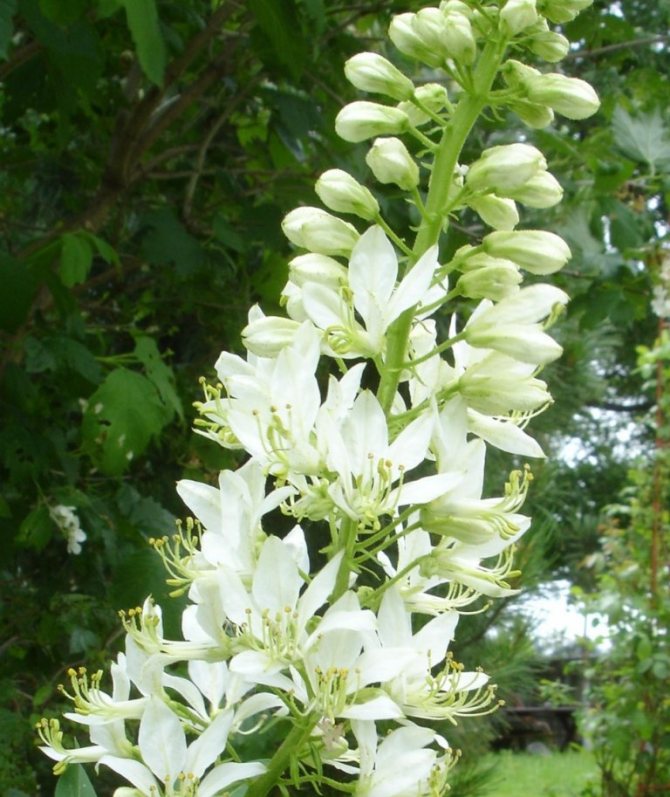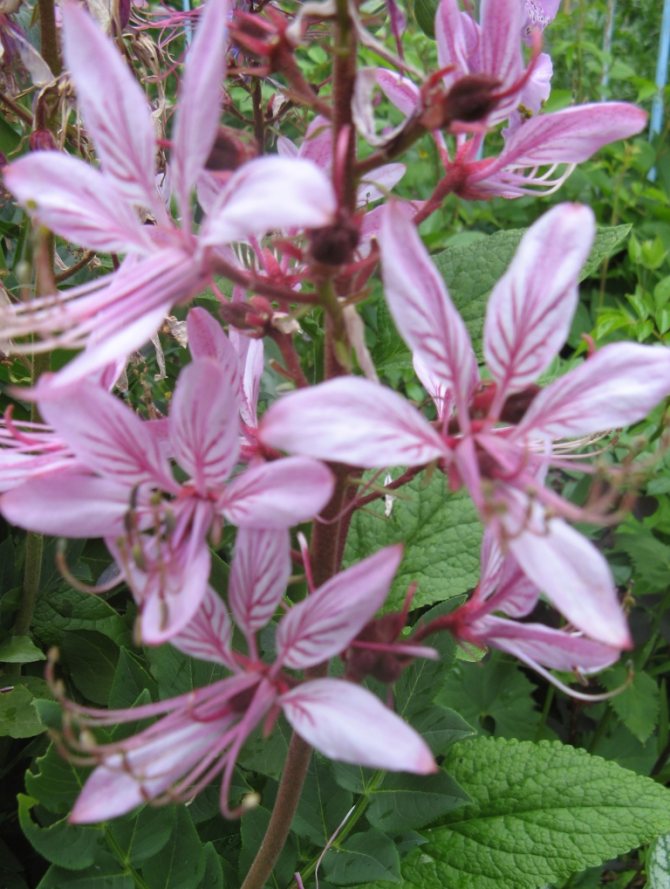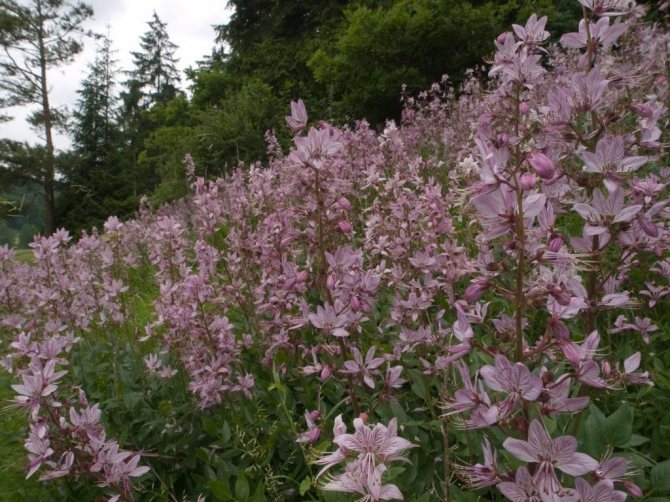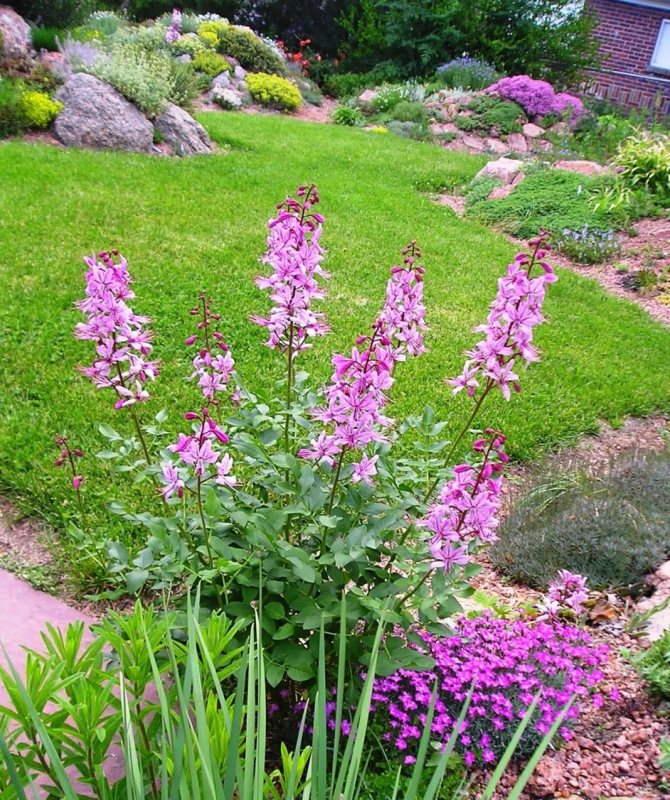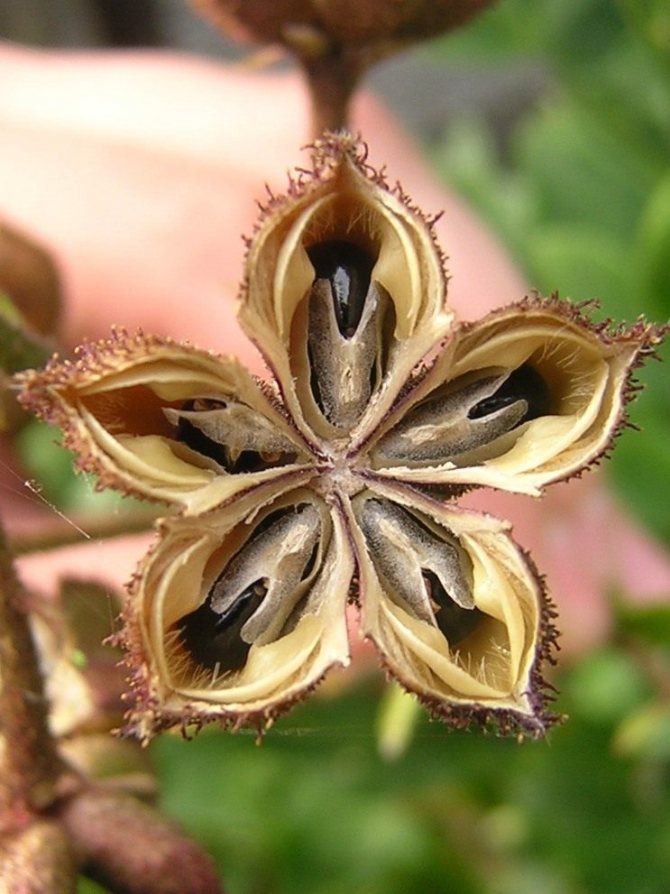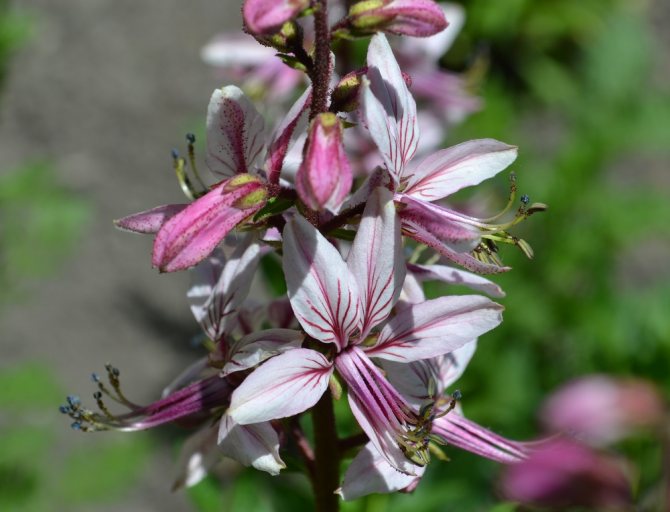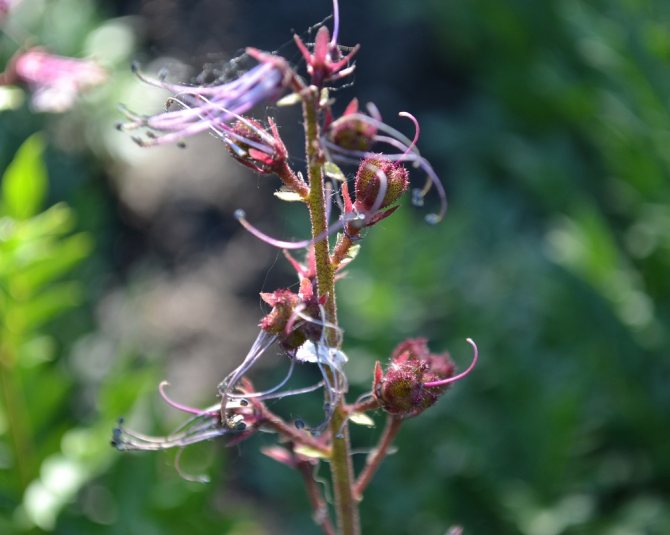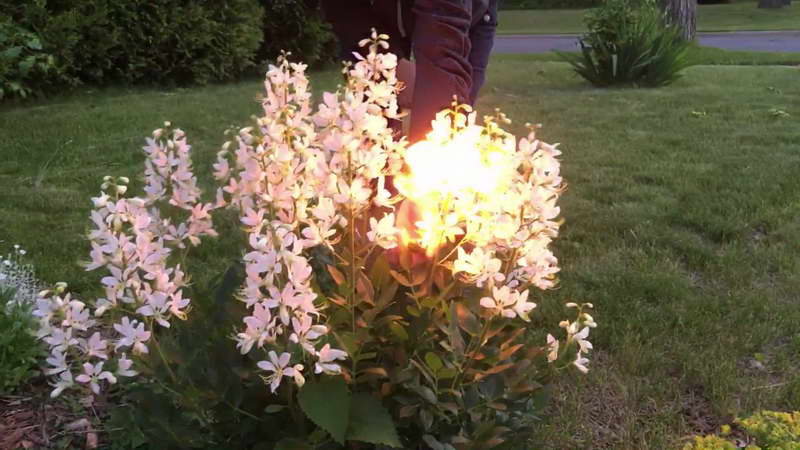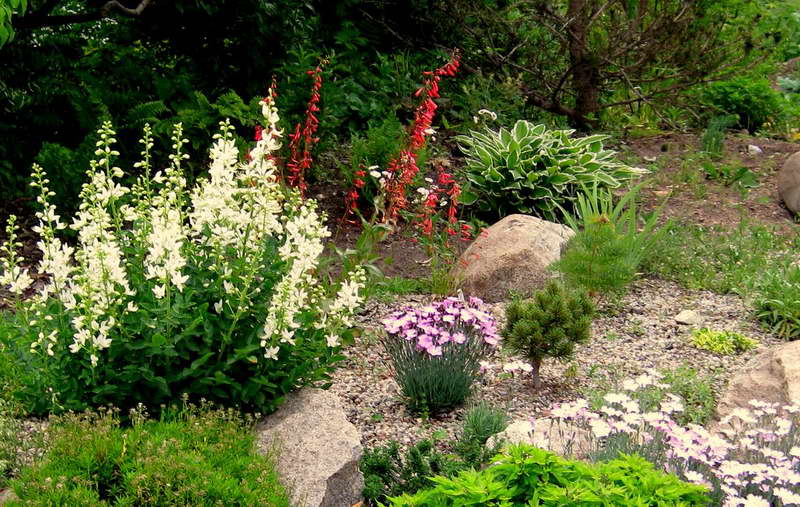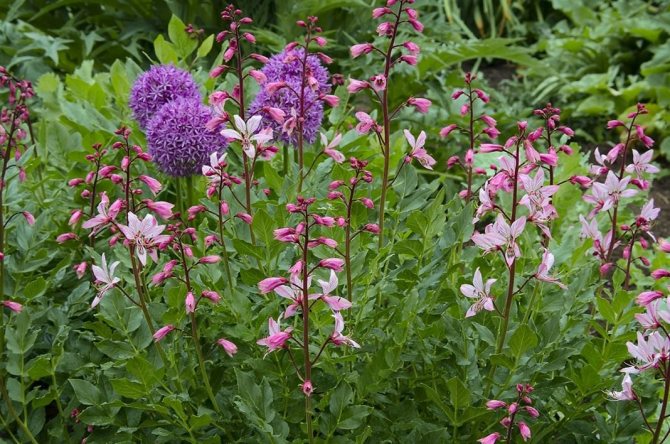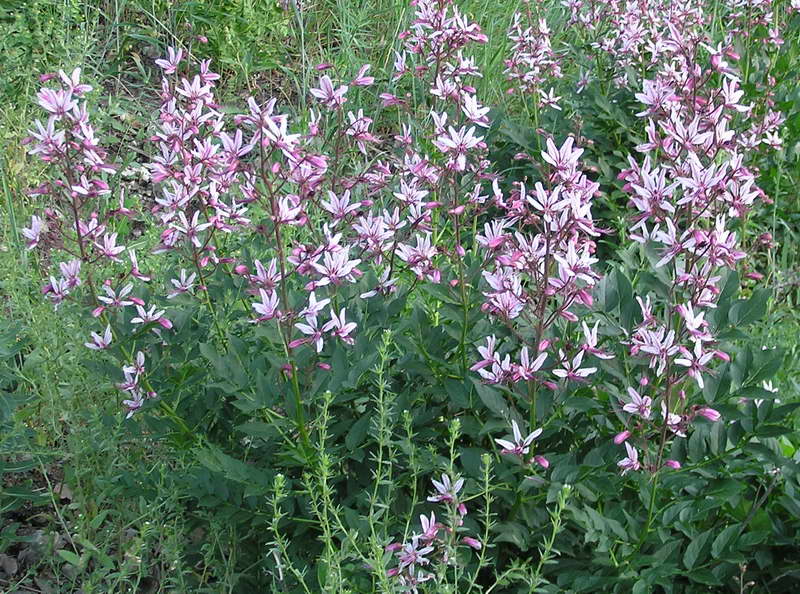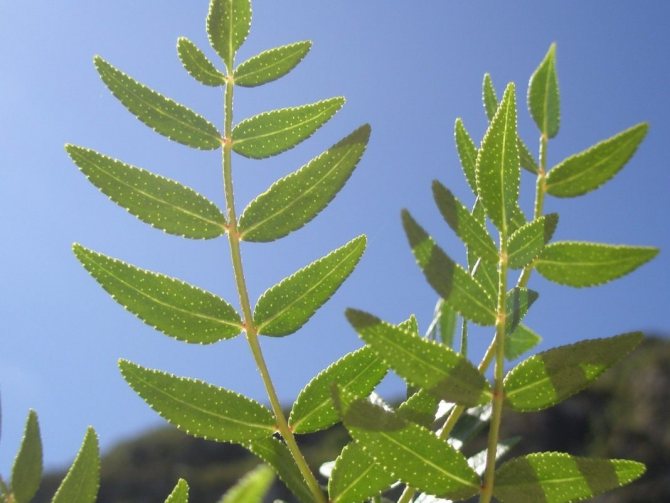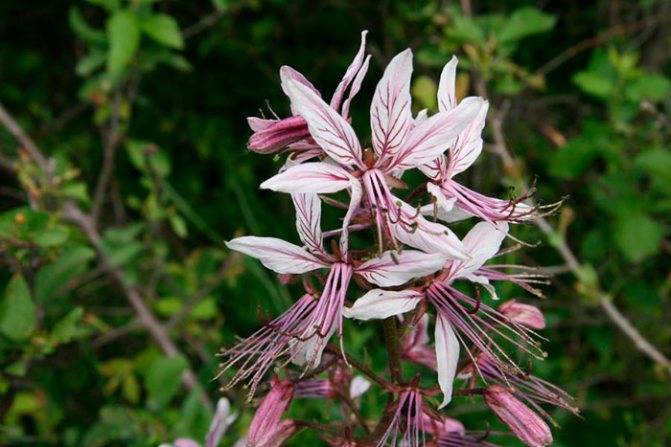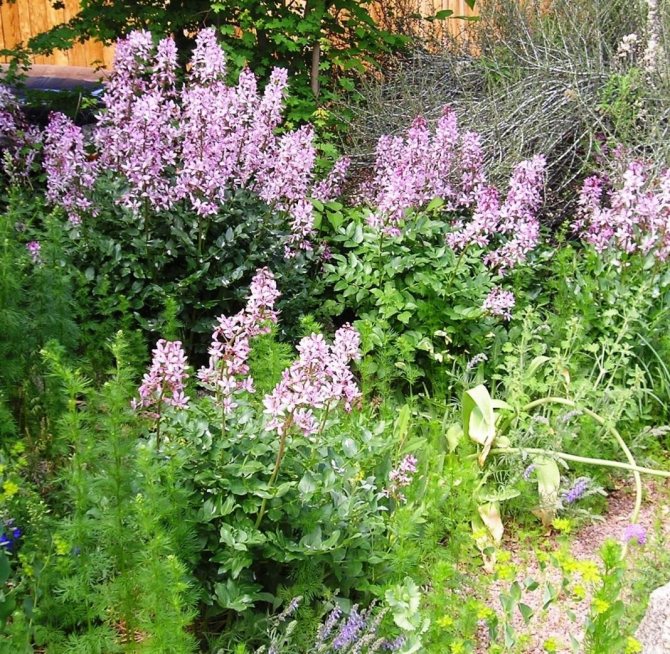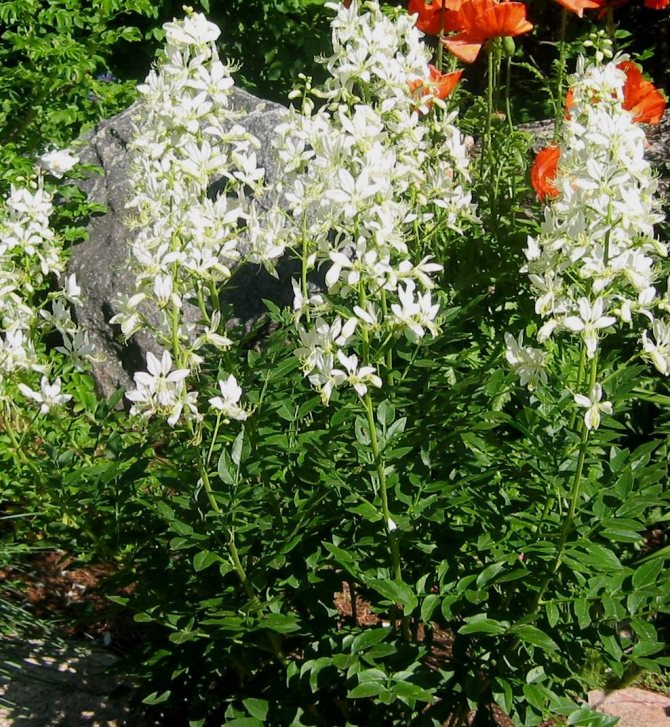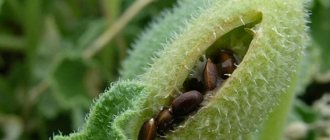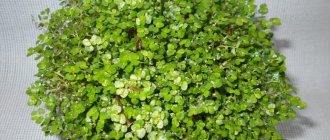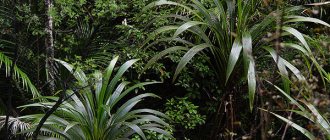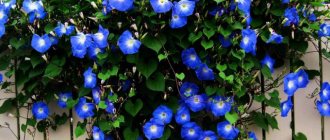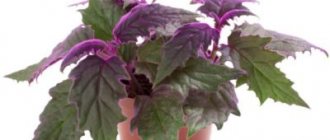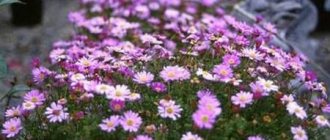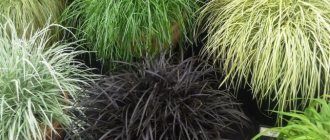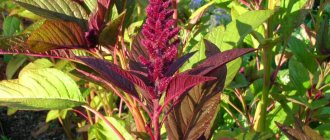A wide variety of flowers grow in our gardens. Some of them are obligatory residents, others are fashionable “stars” of the season, there are favorites, but there are also exotic “curiosities”. The last category also includes the dangerous beauty - the burning bush. The plant is widespread in the Caucasus and Crimea, but here, in the middle lane, its garden forms are still rare. Why is this flower dangerous, and why does it have such a strange name? How to propagate, grow and safely care for it? We will try to answer all the questions in this article.
Why is it dangerous?

As already mentioned, the burning bush is a flowering plant that emits a pungent and unpleasant odor. When inhaled, a headache may begin, which disappears after a few hours. Garden forms of ash trees are less dangerous than wild ones, but when processing it, especially on hot summer days, it is imperative to wear gloves, long-sleeved clothes and trousers covering the legs to avoid accidental burns. Do not plant this plant along paths or in areas where children may be. It should be remembered that the seeds of the plant are also unsafe, so gloves should be used when harvesting them in autumn.
Features of the garden ash tree
Currently, all forms of the ash tree have been combined by scientists under the general name - white dictamnus. Orchard ash is a tall perennial plant, reaching a height of up to one meter. The processes are straight, covered with an edge, the root system is developed and powerful. Shoots complement well the leaves sitting on tall stalks. The lower leaves are whole, the stem leaves are odd-pinnate, similar in appearance to the foliage of an ash tree.
The leaves are very fresh and have a bright green color. The ash tree, even in very strong heat, looks as if it has just been watered - fresh and juicy. The rather sharp shape of the leaves goes well with the soft color of the plant.
The dictamnus flower attracts attention with its amazing color and shape. The diameter of the flowers reaches 2.5 cm, they are light pink or white in color. The petals are pointed, the stamens are graceful light green or less often yellow. Inflorescences reach 20 cm in length. They do not have much pomp, but are usually large and graceful. The petals have bright streaks that add elegance to the flower.
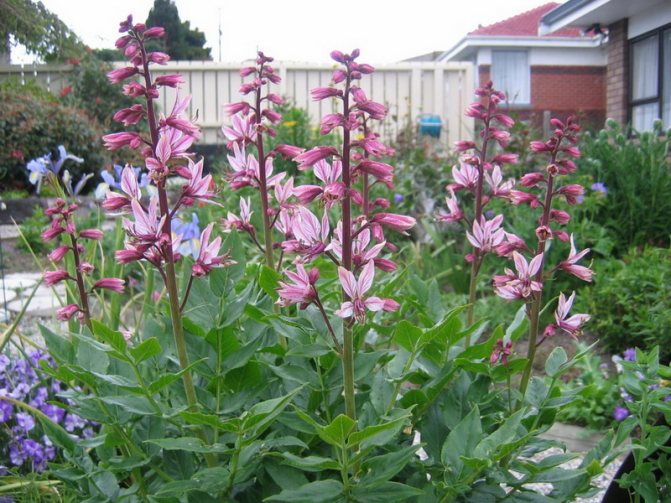

The plant has a strong aroma that it gives off during flowering. The scent of ash, which is bittersweet and similar to dried peel, is very recognizable, but some may find it too intrusive.
Typical horticultural plant species that we grow are pink or dark red. The flowers of the plant are either whitish or pinkish. Largely due to the presence of darker veins, pink petals are always distinguished by extremely attractive and varied shades. It is very difficult to find two ash bushes that have the same color. This only adds to the attractiveness of the garden ensemble of the bushes of this plant.
The ash tree begins to bloom in June and continues to bloom for a month and a half. There are also forms of a plant without a flower, which resemble the shape of the stem and color of a magnolia. They are suitable for those who do not like the peculiar scent of a blossoming ash tree.
Perennial osteospermum: home care
What to do in case of a burn?
As with any chemical burn, first of all, you need to wash the affected skin well with soap and water. In the event that you did not notice the touch, and later found bubbles, then they need to be treated with any gel with an antibiotic and try not to open them as long as possible. If the blisters do burst, then the wound should be treated with hydrogen peroxide every day, and then a bandage with an ointment containing antibiotics should be applied and covered in several layers of bandage.
The ash, or the burning bush, is a very unusual plant that, if desired, can be grown in your summer cottage. However, first you need to know more about him.
Growing a plant from seeds
Reproduction is carried out with freshly harvested seeds in open soil immediately after harvest. Planting is not done immediately in the place prepared for the ash tree, but in the seating row. The plants that appear the following spring are thinned out and planted, and then grown for two or three years.
After growing, they can be moved to their permanent habitat. Only in the third year will the plant bloom. If the seeds are sown not immediately after they are harvested, but in late autumn or spring, they will still grow, but some of them will germinate all year round.
Growing mirabilis: planting and caring for a night flower
Botanical description
The Burning Bush is a herbaceous plant with a straight sticky stem without branches about 70 cm long. It belongs to the Rutov family. The flowers themselves are large bells, collected in inflorescences in the form of brushes of various colors: pink, white and purple.
Most often, there are two main types: Caucasian and white ash. So, the Caucasian grows to a height of about 75-85 cm with pink-lilac inflorescences that appear in June. The white ash tree reaches 50-60 cm in height, its flowers are white, and you can see them in the first two months of summer. By August, it bears its first fruits.
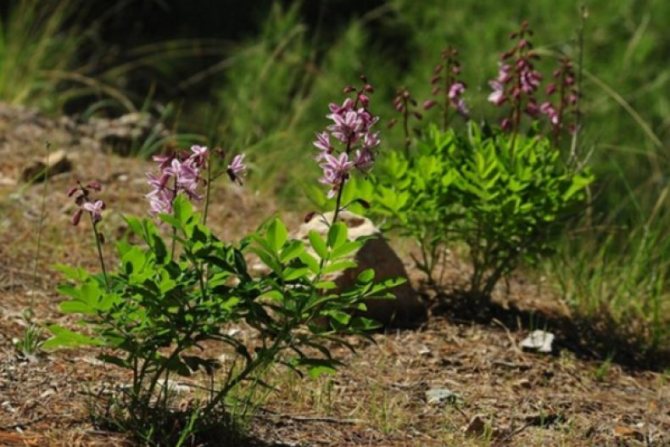

Botanical features
Burning Bush is a plant of the Rutov family with a branched root system and beautiful flowers.
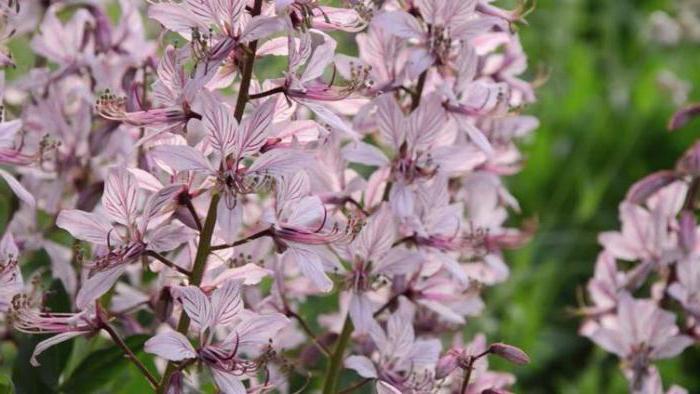

Slightly pubescent, slender stem of this perennial ornamental flower can grow up to 1.5 meters. The leaves of the ash tree are medium-sized and, usually, pinnate. The upper part of the stem and leaves are densely covered with special glands that secrete strong-smelling essential oils. The racemose inflorescences of the burning bush come in different colors, from light pink to purple-lilac. Each five-petalled flower is adorned with blue-violet or red veins. The ash-tree blooms closer to mid-June - in July, and this can be recognized by the bright and not very pleasant "pharmacy" smell that spreads throughout the entire district. In August, the plant already ripens and falls off its fruits, smelling of freshly ground cinnamon.
Growing features
Ash (both Caucasian and white) is not too whimsical and boasts excellent winter hardiness. However, in order for a beautiful and healthy plant to please you for more than one year, you need to know how to grow it correctly. There are some lighting and soil requirements.
Lighting
Under normal conditions (i.e., in nature), the burning bush most often grows in a light forest, on the edge, on a slope or in bushes. Loves both the open sun and partial shade. Grows wonderfully in the shade of other plants or on its own. Not demanding for lighting. It can live in the same place for about ten years.
Soil type
The soil should be light and well-drained. Thrives on alkaline or neutral soils. For an ash tree, poor soil will be even better than saturated with organic matter.
However, it should be borne in mind that there should not be groundwater nearby, because the burning bush does not like wet ground. So, sod land, sand and humus in a ratio of 1: 2: 2 would be a good option.
Care features
It grows well both in the sun and in the shade, it is resistant to drought and undemanding to the soil, the burning bush. The plant "refuses" to grow and bloom only in very shady places, as well as on waterlogged soils. Watering this flower in the middle lane should be very rare.
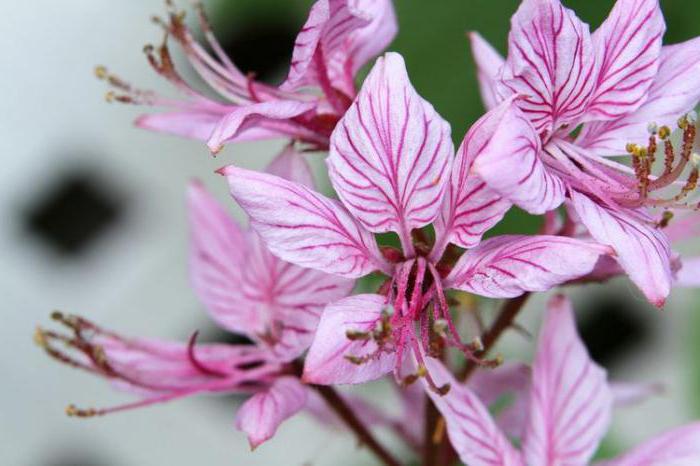

When choosing a place for planting, you must remember that the ash tree will demonstrate all its beauty in a sunny and protected place from the north winds, best of all - on the eastern or southern elevated section of your garden. This flower has no special requirements for the composition of the soil; the main thing for it is good drainage and the absence of excess water. In one place, the bush can grow for about 10 years. The burning bush is a plant, the care of which is somewhat unusual for us: no need to water, you can fertilize, but only in very small doses. The plant hibernates well, but in especially harsh or snowless winters it is better to cover it with spruce branches or foliage.
Planting an ash tree
The flowers of the burning bush will certainly delight you with their beauty, if you plant them correctly. It is important to know at what time to sow and how to do it correctly.
Sowing dates
The seeds of the burning bush are sown in open ground as soon as they ripen. Thus, seed germination will be much higher. Sowing before winter or spring is also allowed. If you plant the seeds of an ash tree in the fall, then they will sprout only after a year.
We sow the seeds
Small seedlings should be planted in a small school (or a greenhouse in which the seeds germinate). Moreover, there should be a distance of about 10-15 cm between them.
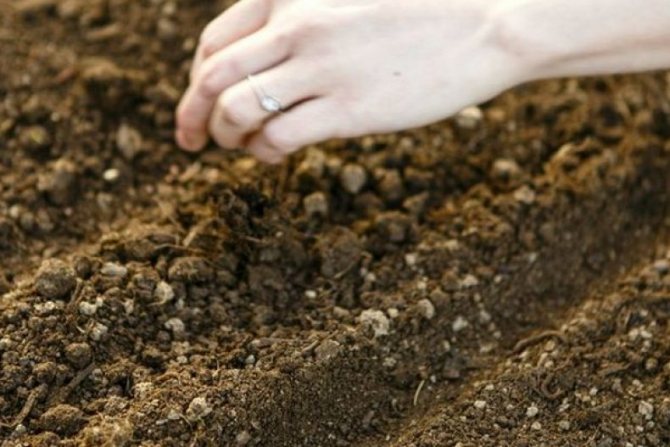

Thus, plants should be grown for three years, and only after this time can they be planted in a permanent place. After that, the burning bush will grow in one place for several years and will not cause much trouble.
How to grow?
The Burning Bush is a plant whose reproduction is possible by spring and autumn sowing of seeds, by dividing a bush or in spring, by cuttings with a "heel".
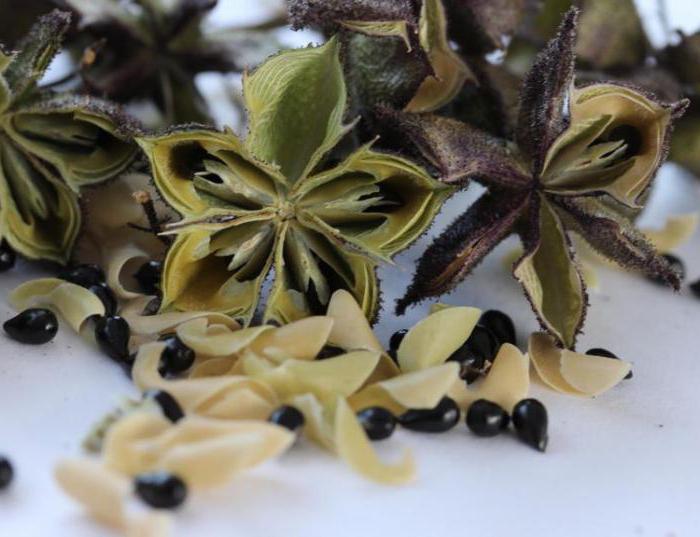

Despite the fact that the ash tree can produce self-seeding, the germination of its seeds is rather weak. Florists note that sometimes, when sowing under winter sowing, they germinate only after a year. Small shoots sprouted from seeds are transplanted into mini-greenhouses or small boxes, leaving 10-15 cm between plants. In such conditions, seedlings are grown for three years, after which they are planted in a permanent place. Such plants will bloom in a few years. The easiest way to propagate an ash tree is to divide an adult bush in spring or autumn. The seedlings obtained in this way take root better and begin to bloom earlier.
How to care for a plant
An ash tree requires not only a favorable planting, but also proper care. If all the conditions are met, a beautiful flower will grow, as in the photo below.
Watering
The plant is unpretentious for watering, but you should be aware that a large amount of water can adversely affect its condition. Watering the bush should be done only on dry days. In other cases, watering should be done quite rarely.


Soil care
The plant is not particularly demanding on the soil. However, mulching around the plants must be done. There is no need to warm the ash tree for the winter, because it will feel great under the snow.
Top dressing
Burning bush needs fertilizers that alkalize the soil. Thus, the plant should be fed during the flowering period: once or twice. It is desirable that fertilizers are complex.
Decorativeness of the plant
In decorative floriculture, at least 2 varieties of this perennial plant are used: "Pink" and "White", both of which have a lemon scent. The ash tree (Dictamnus albus) always comes first in the garden due to its unusual beauty at the moment of flowering. And even when it is not blooming, the tall bush with carved leaves looks very impressive.From a decorative point of view, even its star-shaped seed heads look very interesting. So why is this plant so rare in gardens? The ash tree grows very slowly, and it will take at least 3 years to wait for its flowering.
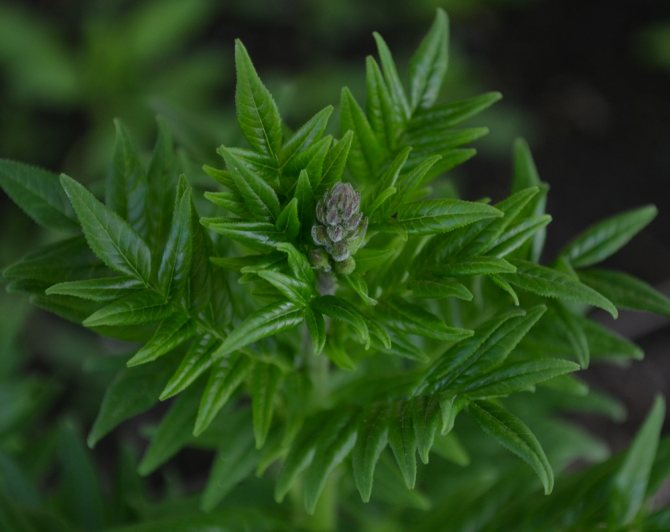

Ovaries appear on the tops of the plant in mid-May, from which the first flowers will appear soon.
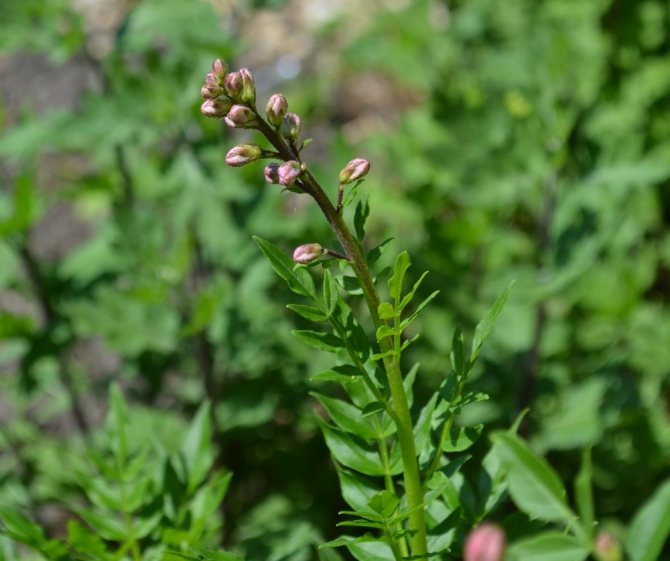

Only a week has passed and the peduncle is almost ripe.
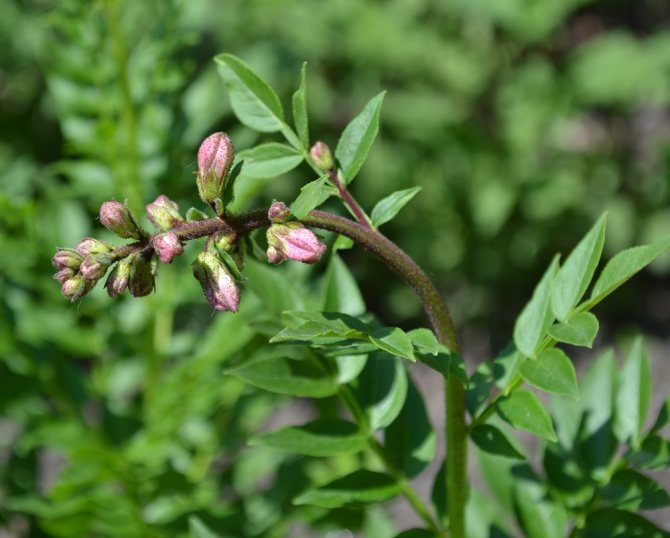

A few more days and the first flowers of May will appear at the dictamnus. This photo was taken on May 20th. The bush of this plant grows in the open area of our garden. Those that grow in the shade are not yet ready for the flowers to appear.
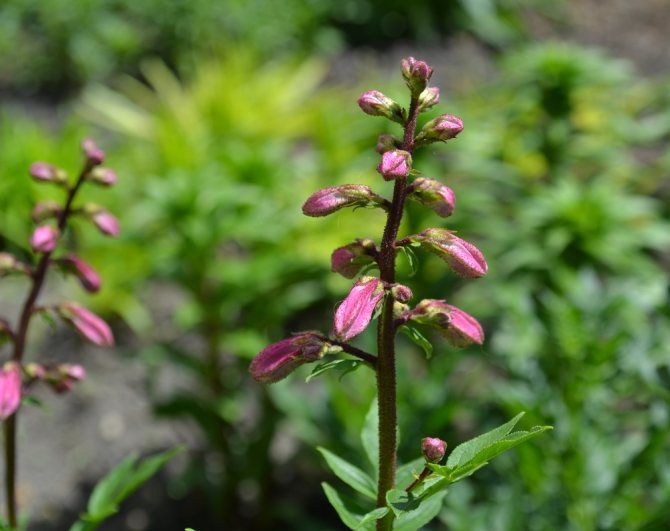

Three days have passed, the buds have increased, we are waiting for the flowers to appear every day. But apparently the cool weather of this spring is delaying the opening of the booths. By the way, these ash bushes grow in the open area of our garden, and practically the entire daylight hours are in the open sun. Plant growth does not exceed 50 cm, and the buds have already formed. Another clearing of the ash tree grows in the shade, the growth of bushes exceeds 70 cm, but there are still no buds.
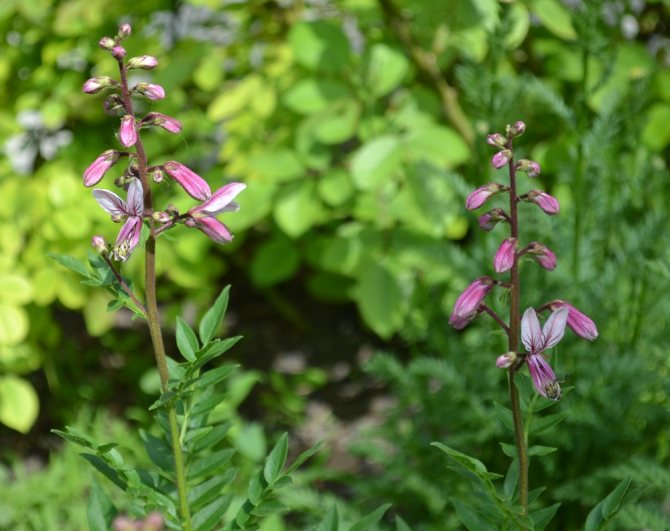

The next morning, the first dictamnus flowers appeared.
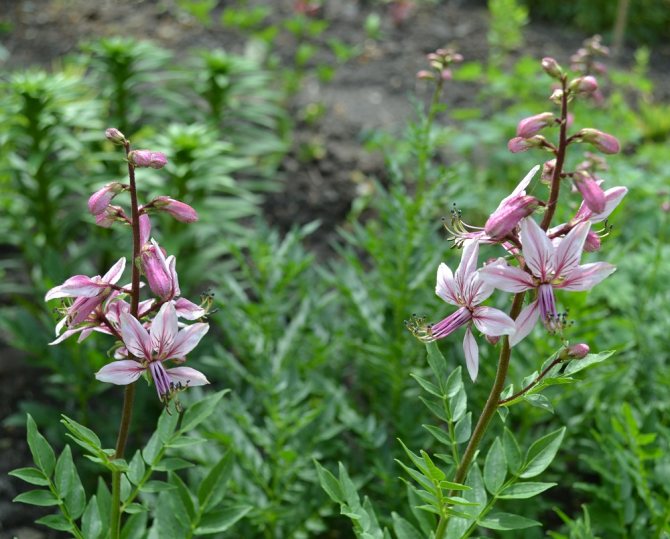

And the very next day, about ten flowers began to decorate the ash tree bushes.
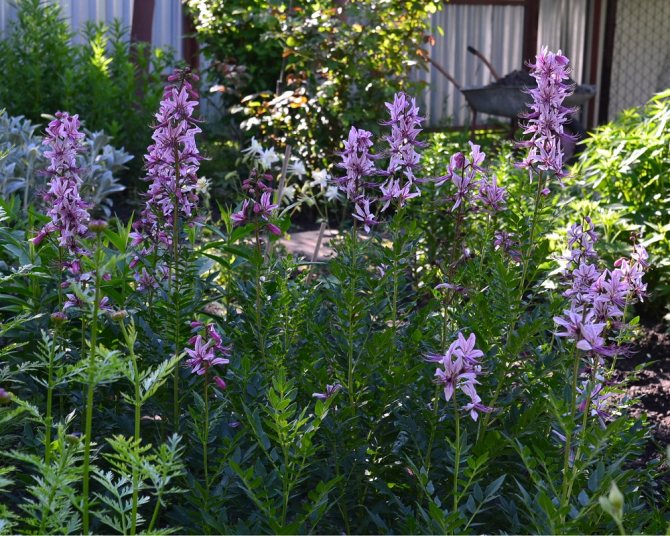

Burning bush and safety
You need to be careful with the burning bush, because it is especially dangerous. It is strictly forbidden to touch it, you cannot even smell flowers. The danger is that when a person touches a flower, he does not feel anything, but after 12 hours the skin begins to redden and blisters appear, after which a second-degree burn forms.


Fever and severe weakness may also appear. All this is explained by the fact that the cells of the burning bush secrete certain substances that tear the skin.
Precautions
Dictamnus, being a toxic and poisonous plant, requires certain precautions. Frequent discussions about the lethal or even significant danger of this plant are extremely far-fetched, but they have some reason. After a while after direct contact with the plant, burns may occur on the skin. It is dangerous to inhale the smell of ash too much - ether can cause burns to the lungs. Moreover, all the harmful consequences occur only after a while.
Flowers and seeds of the ash tree are especially dangerous. Photodermatitis may occur - activation of an allergen or irritant under the influence of the sun.
Burns will heal over time, but they will not go away without leaving a trace, since there will be ugly scars and scars, spots that will remain for about a year. It is worth noting that all this happens only in good sunny weather, on a gloomy day the ash tree is absolutely harmless.
It is necessary to transplant, cut and feed the plant, completely covering the skin with adjacent clothing. Don't look too closely at the plant, especially during flowering. It is better to protect hands with gloves and remember that after contact with the plant, you cannot touch your face and touch your eyes.
Diktamnus does not require any special care. If you plant the plant correctly, providing the area necessary for development, you can limit yourself to rare watering - no other action will be required for a long time.
Description of the plant
White ash is a herbaceous perennial that grows up to 80-90 cm in the first year of life. On its unbranched stems, it bears odd-pinnate leaves, similar to ash leaves, to which it owes its name.
Another name for the plant is the burning bush. It is due to the fact that if on a hot day you strike a lighter next to it, the air around the inflorescences will flash brightly for a couple of seconds, with a distinct pop, but the plant itself will not catch fire. The focus is due to the large amount of essential oils secreted by flowers and fruits.
In Latin, the ash tree is called dictamnus, which comes from the words "dicte" (mountain on the island of Crete) and "ihamnos" - a small shrub. Dictamnus is a small genus within the Rutov family. Previously, from 3 to 6 species were considered in it, now most researchers believe that there is only one species - white ash, aka Caucasian ash.
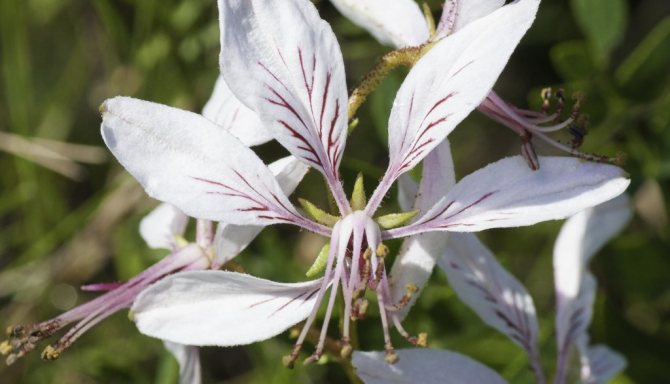

When the essential oil of the plant comes into contact with the skin, severe burns will appear in a day.
Tall racemose inflorescences up to 15 cm long are formed in June and last for about two months. Large, up to 2.5 cm in diameter, dictamnus flowers have an original shape: 4 petals elongated by boats are directed upward, and one is downward. As a rule, they are pink with clearly traced burgundy veins, but there are also forms with white flowers.
Description of the dictamnus flower
The flowers of the ash tree are very unusual and attractive. The flowers are quite large, up to 3 cm in diameter, white, pink, reddish or lilac with dark purple veins. The flower has five sepals, five petals, of which four are facing upward and the fifth downward. There are ten curved stamens in the center of the flower. Flowers grow in a brush, inflorescence, reaching a length of 15 cm or more. Flowering begins in June and lasts almost until the end of summer. Rare flowers can be seen even in autumn
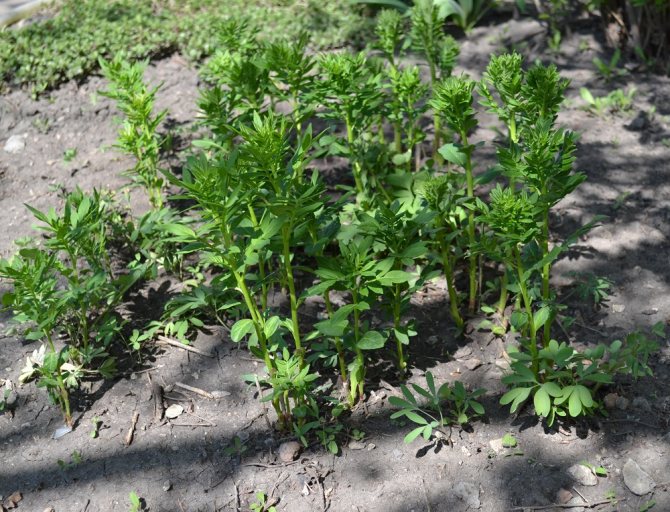

And this picture was taken a week later.
Chemical composition
Ash is a plant no less dangerous than hogweed. The glands located on all above-ground organs of the plant secrete up to 0.5% of essential oil, which includes anethole and methylchavicol. The oil gives the plant a strong orange peel scent, although many associate this smell with the dentist's office.
The fruits of the plant are in the form of a five-nested capsule, opening out as a symmetrical star. For this feature, in the Caucasus, the ash tree is called a wild star anise.
The insidiousness of dictamnus essential oil is that it does not work immediately. It is enough to rub a leaf in your hands or even touch the plant on a bright sunny day, so that after a day, severe burns appear on the skin. It is the flowers of the ash tree that are especially dangerous, since they secrete the most essential oil. Its effect is explained by the presence of photosensitizing components that multiply the effect of ultraviolet radiation.
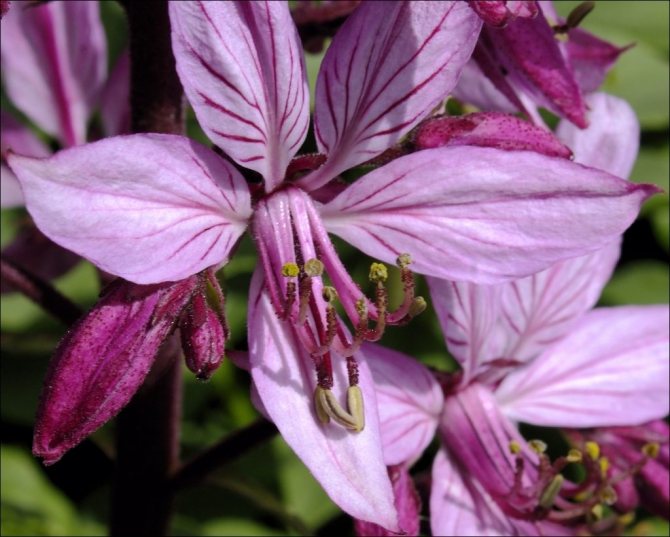

Ash is a plant no less dangerous than hogweed
The roots and rhizomes of the ash tree are rich in toxic substances - alkaloids, including:
A warning
Depending on the climatic conditions of the growth of the ash tree, it can be recommended to handle it more carefully. Handling plants can cause skin irritation or an allergic reaction. On cloudy cool days, the plant is absolutely harmless. But on dry, hot, sunny days, there is information that touching the leaves and petals of a flower can burn the skin. More precisely, this skin irritation is called phytophotodermatosis. Painful skin reaction to allergens released by the plant when the skin is actively exposed to sunlight. However, this reaction is possible only in a few people. However, keep this in mind, especially if you have small children.
Distribution and habitats
Ash, or the burning bush, is a thermophilic plant that grows in Europe, in the lower reaches of the Volga, along the shores of the Black and Caspian Seas, where it is called the Caucasian ash tree. The climatic conditions of southern Siberia, as well as such Asian countries as Turkey, Syria, Iran, the central regions of China and Korea, are also suitable for it.
In nature, the flower prefers moderately moist soils with good drainage, willingly settles on stony and sandy loam slopes, on the edges, among the undergrowth of light forests. In culture, it is grown almost everywhere, except for the regions of the Far North. This is one of the rare crops that tolerate alkaline soils well.
Growing and caring for dictamnus
At the peak of its growth, the dictamnus bush can reach a height of more than a meter and a little less than a meter in width. The spreading branches of this perennial plant with small carved flowers resemble bush branches. However, during the winter, all its branches die off, because it is a herbaceous plant (half-shrub). For the winter, the branches of the shrub can be safely cut to the very root. And it is not necessary to cover the roots of an adult dictamnus bush for the winter. Thanks to its powerful root system, ash is very resistant to all weather conditions, from heat to frost. Nevertheless, it should be borne in mind that the ash tree naturally grows in the southern warm parts of our country, in particular in the Caucasus, and heat and drought and stony soils are more acceptable conditions for it than waterlogging of fertile soils and deep frosts. Despite this, the ash tree can also grow in areas of the European part of our country, subject to certain minimum requirements. Forest fields and rocky debris in the open sun, mainly on calcareous soils, are the ideal place for this plant. The most suitable soil composition for dictamnus is neutral or slightly acidic. However, it will grow well in normal garden soil as well. If you have a choice, then look for a dry, sunny spot in the garden for it, heavy or too wet soils will not work for it.
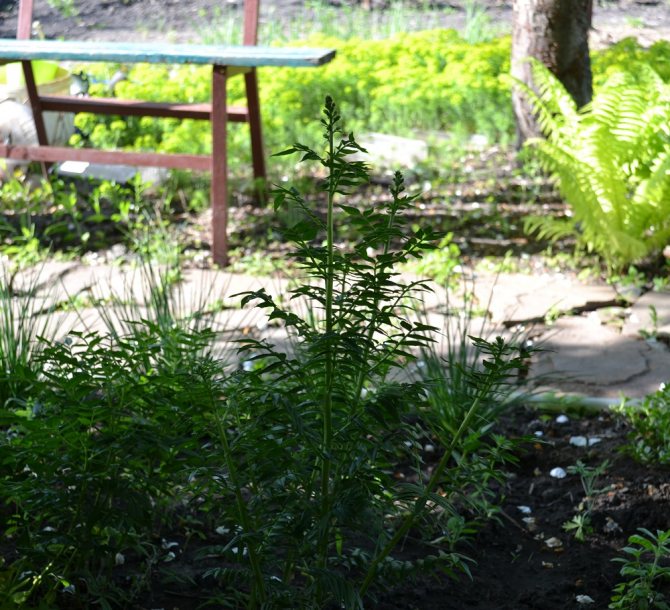

A place in the garden should be chosen not only sunny, but also slightly shaded. An ash tree can often be found at the edge of the forest, in semi-shady places. It is not necessary to water the plant abundantly, but it is necessary to monitor the soil moisture. As already noted, it is not necessary to cover the ash tree for the winter, but it is advisable to sprinkle the replacement buds that are bare in the fall with earth or peat. After flowering in the fall, boxes with seeds are formed on the ash bush. If you manage to collect them on time and decide to propagate the plant with seeds, then this should be done before winter. But seedlings in pots can be planted in the garden throughout the season. Keep in mind that in the spring, slugs can reach for the lemon scent of this plant and damage or even destroy young shoots. Suitable for: light (sandy) to medium (loamy) soils and prefers well-drained soil. Suitable pH: acidic, neutral and basic (alkaline) soils. It cannot grow in the shade. It prefers dry or moist soil and can tolerate drought.
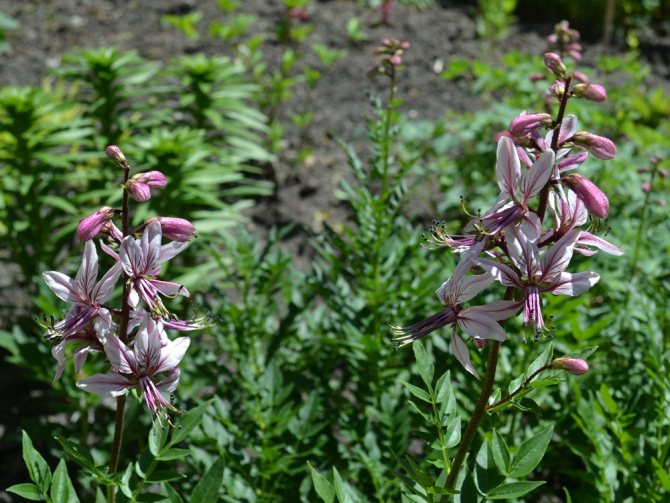

Medicinal properties, use and possible harm
Yasenets is not included in the State Pharmacopoeia of the Russian Federation and is not used by official medicine anywhere in the world. No studies have been conducted on the medicinal aspects of the plant and the effects of its use. However, traditional healers attribute the following medicinal properties to him:
- sedative;
- diuretic;
- antihelminthic;
- anti-febrile;
- anti-inflammatory.
Medieval healers with the help of the juice of the herb dictamnus tried to remove warts and rejuvenate the skin, and with decoctions to treat dysentery. Currently, traditional medicine uses the plant externally for the treatment of tick-borne scabies, urticaria, mastopathy, dermatitis. Inside, a decoction of ash is used as an antihelminthic and sedative.
Independent use of plant preparations is not recommended due to the high content of alkaloids in its tissues, which can cause severe headache and general poisoning.
Characteristic features of the Yasenets variety.
The plant is distinguished by its aggressiveness. As we said earlier, the plant is toxic and can leave burns and wounds on the skin. It is also important to keep in mind that you will not immediately feel the effect of the toxin on the body. Carrying out any actions with the plant, you must follow all precautions, protecting all open areas of your body. You should also not bend over to face the plant, you do not need to smell it, you can get burns of the mucous membrane of the nose and eyes.Many are afraid to come close to the plant, but there is no need to be afraid of it, you can get a burn only by coming close to the plant in very hot weather, and many also believe that it will take a long time to heal the wounds and burns received, but unfortunately, they are irreversible. Therefore, you just need to be careful when growing this plant. in addition to the fact that the plant has a long flowering period, it can itself grow for a long time without transplanting (several decades). If you provide a large area for growth, it can be planted and forgotten. For decorative purposes, ash is used:
- As a visual peak - the highest accent on the flower bed and flower garden.
- As a background crop on a flower garden and to fill the middle plan of double-sided beds.
- As a single shrub for decorating flat flower beds and as small groups as a tall flower decoration of a textured flower bed.
- As a catchy plant (country style).
- In a romantic ensemble with a focus on the originality of the flowering and the palette in pink shades.
- In a landscape group and an array.
- In order to design rockeries and rock gardens.
- In a mixborder with a flowering relay.
On a flower garden and in a decorative composition, the plant should be placed further from the paths so that they are not in the contact zone. You should be very careful when planting ash trees in a mixborder or next to recreation areas, despite the aroma, beauty, the plant has strong toxicity in order to carelessly place. As a plant partner, it is better to use heuchera, monarda, kermek, daylilies, liatrices, gypsophila.
Collection, procurement and storage
The main medicinal raw material of ash is the roots and rhizomes. They are harvested in early spring or late autumn. The raw materials are dug up, washed, dried and split lengthwise into strips. These strips are laid out on a baking sheet or paper, dried in the shade under a canopy or in dryers at a temperature not exceeding 45 degrees.
Ash grass is harvested during the flowering period. It is cut with pruning shears, cut into pieces and dried in the shade. Like any other work with dictamnus, the collection of raw materials is carried out with gloves and closed clothes. Dried raw materials are stored in paper bags for no more than a year. The container must be marked with labels marked: "Poisonous!"
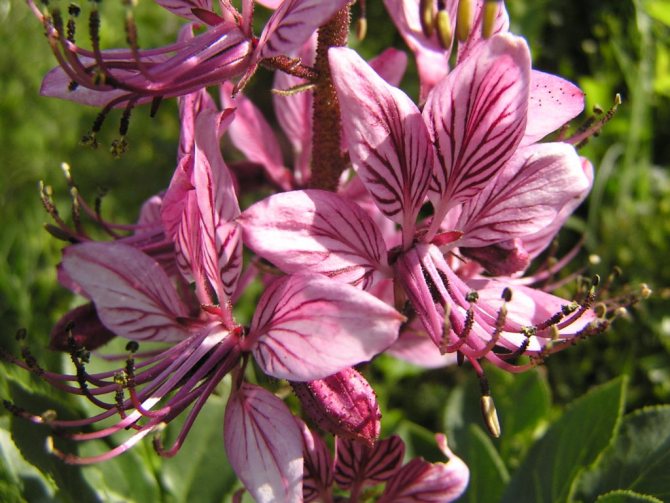

The main medicinal raw material of ash is roots and rhizomes.
Caring for mature plants in the garden
Ash is an unpretentious plant. He needs watering only during the dry season, in a normal summer in the middle lane there is enough natural precipitation. It responds positively to mulching the soil surface with humus, tree bark, grass cuttings. Under the cover, the soil does not dry out and does not overheat, the growth of weeds is inhibited.
Fertilizing the plant is not required. It is enough in the early spring to sprinkle the soil around the bush with rotted compost or manure. In the middle of summer, it is useful to scatter 250 - 300 g of wood or grass ash under the bushes.
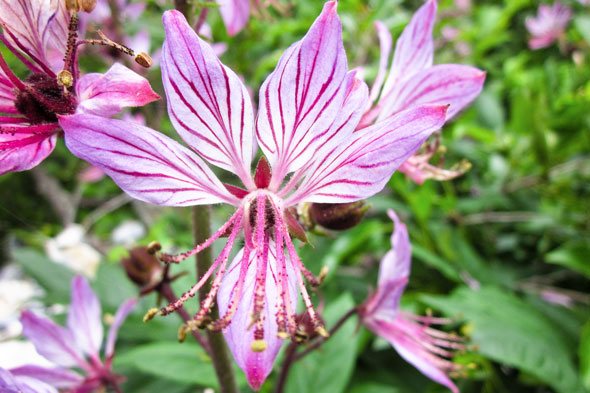

The faded shoots from the plant are cut off so that the bush retains its decorative appearance.
The ash tree does not suffer from any diseases. Pests also bypass the poisonous plant.
In the middle lane, it winters well under a snow cover; additional shelter is not required. The aerial part of the flower is cut off before the onset of persistent frosts.
Recipes
Ash products should be used with caution and after consulting your doctor. Usually, on the basis of this plant, an ointment is prepared for the treatment of skin diseases, as well as a decoction and tincture as a diuretic and sedative.
Ointment
To prepare the ointment, dry roots of dictamnus are crushed in a coffee grinder and mixed with petroleum jelly in a ratio of 1: 20. Mix thoroughly, let it brew for a day, then store in the refrigerator. The ointment is applied to the affected area with gentle circular motions.
Decoction
1 teaspoon of root powder, pour 2 cups of boiling water and simmer for half an hour in a water bath.After cooling, the broth is filtered, stored in the refrigerator. Drink a glass a day before meals in three divided doses.
Tincture
A teaspoon of dry root powder is poured into a glass of high-quality vodka or alcohol (40 degrees) and insisted in a dark cabinet for 2 weeks. The product being prepared is shaken once a day. The strained tincture is consumed half an hour before meals, 40-50 drops.
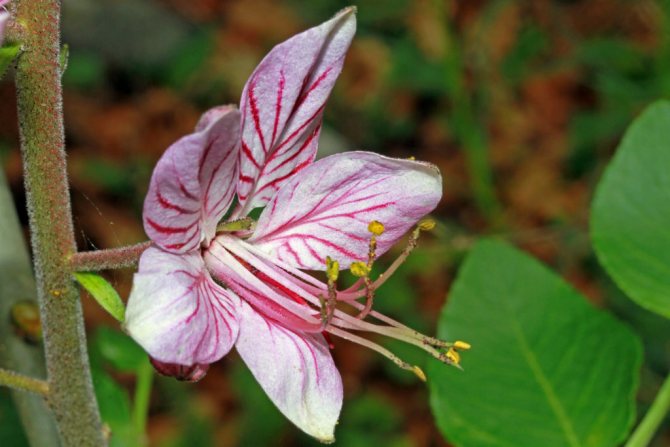

Ash surrounds itself with a poisonous cloud of essential oil
Burning Bush is an example of a plant that is admired for its beauty and requires respect and caution. Romantic bright pink candles with emerald green at the base look luxurious in gardens and rockeries. However, they should be admired from some distance - the plant does not tolerate familiarity and surrounds itself with a poisonous cloud of essential oil.
Common types of Ash
White Ash (Dictamnus Albus)
The height of the bush is 90 cm. The leaves of the White Yasenets are rather dense, located on long petioles. At the base of the plant, the leaf plates are solid, but on the shoots they are pinnate, ovoid, with a sharp top. The stem and leaves have a strong odor, they are covered with short glandular hairs, which cause burns. If you accidentally touch them, you can burn your hand. White flowers are collected in a racemose inflorescence up to 20 cm long.
Caucasian Ash (Dictamnus Caucasicus)
The main place of growth is the Caucasus, Iran, the lower reaches of the Volga. The height of the bush is 80 cm. The leaves are pinnate. The color of the flowers is mainly pinkish-lilac, occasionally white.
Fluffy ash (Dictamnus Dasicarpus)
The range of this species is the Far East, the Sikhote-Alin mountains. Special beauty in flowers - bright pink with purple veins.
Holostilis Ash (Dictamnus Gymnostilis)
Grows in the Crimea, on the banks of the rivers of Russia and Ukraine. Plant height varies from 40 to 80 cm. Leaves are elliptical, pointed towards the end. Inflorescences are paniculate or racemose. One of the species that emit the greatest amount of ether vapor.
Contraindications
White ash, like all other species, is a very dangerous toxic plant. Gathering fruits, as well as simply touching the plant without gloves, is dangerous. Improper use, high dosages, and simply abuse of the medicinal actions of the plant also cause harm to the body.
It is strictly forbidden to use ash tree for pregnant women, as it acts abortively. For women during lactation, it harms not only the mother, but also the child. Contraindications, in addition to individual sensitivity, include:
- heart disease;
- violations of the respiratory system;
- diabetes;
- chronic diseases of the excretory tract;
- acute respiratory infections;
- oncological diseases;
- chronic liver disease;
- deep wounds;
- weakened immunity;
- indigestion due to high acid secretion;
- childhood.
Date of publication: miscellaneous
Recommendations for the care of a burning kupava
The ash tree requires a lot of attention and time during reproduction, but then it grows for many, many years, absolutely not requiring attention to itself. The main thing is to collect the seeds on time, because in a mature state they do not crumble next to the bush, but "shoot", scattering quite far. And years later, you may suddenly find sprouts of burning kupava in the most inappropriate place.
The ash tree is undemanding to the planting site, whether it is a sunny area or shady, fertile soil or rocky. The only thing he doesn't "like" is damp, swampy land.
How an ash tree grows in garden conditions. Photo report on the growth of the ash tree, from early spring to late autumn.
Medicinal recipes based on Caucasian ash
1. For female diseases, it is recommended to use an infusion based on ash root. It can be used to cure fibroids, mastopathy and cervical erosion.To do this, you need to take half a liter of vodka, 50 grams of ash root. You need to drink it one teaspoon at a time, be sure to dilute it in water beforehand - in the morning, at lunchtime and in the evening.
2. An infusion based on ash seeds will help a man to overcome impotence, this requires up to 50 seeds, half a liter of vodka. Insist 3 weeks. Take a tablespoon.
3. For jaundice and cystitis, bark from the root of the plant is used, it must also be combined with honeysuckle, it is good to add licorice.
4. In case of depression, an infusion from a crushed root is used; it must be poured with a glass of boiling water.
5. To cure diarrhea, you need to use ash seeds.
Useful properties and uses of white ash
Botanical characteristics of the ash tree
Ash is a tall, perennial, herbaceous plant with essential oils in its flowers. It belongs to the Rutaceae family. The root system of the ash tree is rich in branching. The stem of the ash tree is slender, slightly shaggy, reaches a height of 90 cm. In its upper parts, you can find many black dots, which are glands.
Ash leaves are usually pinnate, with 5–7 small pairs of leaflets. The leaves also contain many glands, which look like many holes. The inflorescences of the ash tree are racemose and have a rich color range: from pinkish-white to lilac-purple tones. The flowers have up to 5 petals with dark purple veins. The shape of the petals is characterized by a rounded elongation, which tapers to one or two non-pointed corners. Ash fruits take the form of a box.
The ash tree blooms in June-July, but the fruits of the plant ripen in August. When blooming, the ash produces a very strong citrus scent. This is due to the presence of a huge amount of essential oils in flowers. This herb grows mainly in Siberia, in the countries of Eastern Europe, in China, in India, in Mongolia and the countries of Central Asia. It is rarely found in the Ural mountains.
Useful properties of ash
In the roots and stems of the ash tree there are many useful substances, thanks to which many diseases can be treated. Flowers, leaves and stems are high in essential oils. Ash is known to be rich in alkaloids (skimianin, dictamnine, choline), dictamnolactone, saponins, bergapten, anthocyanins, and flavone glycosides. The root contains fatty acids and sitosterols.
To prepare medicinal raw materials for the purpose of harvesting it, it is important to carry out the correct collection, drying and ensure proper storage. The roots are dug up in the spring or late autumn and dried; the rest of the plant is also dried. These actions are carried out at a temperature not exceeding 30 ° C. Some homeopathic remedies made from ash trees require fresh leaves and flowers.
When harvesting ash trees, it is recommended to always wear gloves and avoid getting grass on bare skin, as this plant can cause burns. It is known that when a match is brought to a blossoming ash flower, a small blue flame flares up, explained by the presence of volatile essential oils. It is not recommended to sniff ash flowers for the same reason - there is a high risk of severe burns. The ash is considered a poisonous plant.
Bergapten, found in the plant, is considered a substance that causes sensitivity to light, so you should be careful when preparing infusions from ash trees.
Ash tree application
Due to its rich chemical composition, ash is widely used in folk medicine. Many effective decoctions and infusions can be prepared from it, which will be useful for all systems of human organs. For the genitourinary system, the plant serves as an indispensable agent and acts as an effective diuretic, regulating the menstrual cycle of women, its infusions help with chronic forms of cystitis and kidney stones.
Yasenets perfectly eliminates the problems of bloating and perfectly utilizes worms. For the digestive tract, herbal infusions serve as a medicine in the treatment of flatulence and gastritis. Such a versatile medicinal plant as ash, prepared in special proportions, is a good remedy for epilepsy and asthenia, overwork and insomnia. It is also used as a tonic to invigorate the body. Ash water extracts are used for radiculitis.
The preparation prepared from the roots of the ash tree copes with dermatitis and eczema. Ash is known to treat sexually transmitted diseases such as Trichomonas vaginitis.
Recipes for making infusions and decoctions
Recipe number 1. It is used to treat female diseases with an infusion of ash roots. This recipe is for the treatment of fibroids, cervical erosion and mastopathy. Let it brew 50 g of ash root in 0.5 liter vodka. Reception scheme: 3 times a day, 1 teaspoon of water diluted in a glass. The course of this treatment is repeated after a break of a month.
Prescription number 2. The tool is used to treat impotence. Seeds in the amount of 50 pieces must be poured with vodka (0.5 l), the infusion should be kept for 2 weeks. Reception scheme: 1 tablespoon 3 times a day.
Prescription number 3. This broth is used to treat cystitis and jaundice. It is required to take the bark of the roots of the ash tree in combination with honeysuckle in a total amount of 6 g and, adding licorice, in the amount of 3 g, boil. Application: 2 times a day, 1 teaspoon.
Dittany
White ash (the second name of the plant is "burning bush") is a perennial plant that has a strong characteristic odor. The stem of a white ash tree reaches 1.5 m in height, is slightly fluffy, has no branches, sticky to the touch, strictly elongated upward, straight. The leaves of this plant are odd-pinnate, with pairs of lanceolate leaves up to 5-7 pieces, bright green, tending upward at an angle of 45 °.
Inflorescences have large flowers in the amount of 3 to 5 pieces. The flowers are white-pink, with red veins that adorn the flower. The flowers have long pistils with a color that is in harmony with the flower itself. A purple stamen flaunts at the end. White ash blossoms in June-July, spreading its pungent smell throughout the district, and in August its fruits, which resemble cinnamon smell, fall off.
In hot weather, essential oils are released from the ash tree, as a result of which a kind of haze can be seen above it. This is due to the spontaneous combustion of these substances. An ash-tree grows on the edges of the forest, on rocky rapids, is not afraid of the sun's rays. He prefers calcareous soil. In folk medicine, infusions and decoctions of white ash are used for hysteria, disorders of the gastrointestinal tract, heart disease, female and male diseases, etc. The plant is not used in official medical medicine.
Caucasian ash
The Caucasian ash, or Dictamnus caucasicus, is considered a rare perennial herb. For growth, this species chooses a rocky area; conditions of rocky terrain are also considered favorable. The height of the stem of the Caucasian ash tree is from 30 to 80 cm. The stem of the plant is shaggy, pubescent with curly hairs. The leaves, like all types of ash, are pinnate, have a special ovoid-pointed shape, large, with many holes through which essential oils are passed. As a rule, the leaves of the plant are green.
The flowers of the Caucasian ash tree are large, lilac-white, sometimes violet-pink with characteristic streaks of purple. The flower contains up to 5 sepals, also covered with glands. All petals are of different sizes. This species blooms in May-June. The plant has a toxic effect on living organisms.
Due to the high content of alkaloids and volatile essential oils, Caucasian ash has a local irritating property.After contact with this plant, dermatitis begins during the day, and in special cases, there are allergic shocks. It is undesirable to touch the Caucasian ash tree. It is also dangerous to smell this beautiful plant.
Hollow-columnar ash
Holosteum ash, or Dictamnus gymnostylis Stev., Is a fairly tall herb (up to 70 cm), which is characterized by the presence of beautiful pink flowers of large size. Almost all parts of the plant (stems, leaf petioles and fruits) are strongly pubescent, they have glandular hairs through which essential oil is released, the smell of which is very unpleasant. Moreover, this oil has a blistering effect.
Any contact with the plant can cause skin burns, resulting in severe blistering. The poisonous essential oil has its own purpose - to protect the plant from direct sunlight. Cultivated ash tree as an ornamental plant. This type of ash tree has a healing effect and is used in folk medicine.
The ash-tree is growing in the Crimea, in the Dnieper region of Ukraine, in the Volzhsko-Don region of Russia and in the Republic of Moldova. All parts of the plant - aboveground and roots - are used as medicinal raw materials. Alkaloids and essential oil were found in the roots, essential oil in the aerial part of the plant, furocoumarins (xanthotoxin, psoralen) in the fruits, and fatty oils in the seeds.
Decoctions and infusions prepared on the basis of this plant are recommended as an effective diuretic and anthelmintic. Also, preparations from the ash tree are effective for epilepsy, depression, diarrhea and kidney stones. Decoctions as an external agent are used to treat rheumatism. The collection of the plant must be done with extreme caution. Gloves must be worn. Treatment can be carried out only under the supervision of a physician, while overdose should be avoided.
Recipes for cooking decoctions and infusions
Recipe No. 1. For the treatment of depressive conditions, you need to take 6 grams of finished raw materials (crushed roots) and pour 200 ml of water over it. Next, you should put the container on fire and boil for 5 minutes, then insist and strain for 1 hour. Reception scheme: 1/4 cup after meals 3 times a day.
Recipe No. 2. For the treatment of diarrhea, you need to take 5 grams of finished raw material (seeds of the holosolnikovaya ash tree) and pour water (200 ml), put on fire and boil for 5 minutes, then insist and strain for 1 hour. Reception scheme: 1-2 tablespoons one hour after meals, 3 times a day.
Expert-editor: Sokolova Nina Vladimirovna | Phytotherapist
Education: Diploma in "General Medicine" and "Therapy" received at the University named after NI Pirogov (2005 and 2006). Advanced training at the Department of Phytotherapy at the Peoples' Friendship University of Moscow (2008).
Other doctors
Beautiful flowers, a pleasant aroma attracts a person, but few people are familiar with this plant and know that white ash is dangerous for the body, and at the same time is useful for some ailments. Poisonous flowers that release essential oils can cause burns, but can help treat diseases that modern medicine cannot cope with. Ash tree is not officially used as a medicine, its beneficial properties are popular only in traditional medicine. Its history began many centuries ago, it got its name from the place of origin, from Latin it is translated as "mountain in Crete" and a bush. First discovered on the Mediterranean islands, in particular in Crete.
Caucasian ash: description, plant features
Yasenets belongs to the small Rutov family. In addition to him, this group of plants includes only a few similar species, whose habitat extends from the Mediterranean to the East.The plant is popularly known under other names: wild star anise, butan, ash-tree, etc. The most famous name of the plant is the burning bush.
Ash is a powerful perennial bushy plant with a fairly branched woody root. In height, the ash reaches about 0.7-0.8 m, sometimes it can grow up to 1 m. The stems of the plant are very strong, erect, strongly pubescent, sticky.
Ash is a completely unpretentious plant
Outwardly, the leaves are very reminiscent of ash. The ash tree blooms with large long inflorescences (about 40 cm), represented by numerous white, dirty pinkish or purple flowers with slightly irregular petals.
Attention! Despite its external charm, the ash tree is fraught with serious danger. In sunny weather, its flowers and seed pods should never be touched: they can provoke a severe burn, which will appear on the skin only after 12 hours.
At the moment of contact with the flower, pain does not arise. But subsequently, irritation will appear on the skin, which will be replaced by blisters, then ulcers, the temperature will rise and the condition may become critical. By the way, it is also impossible to inhale the scent of flowers: they can cause allergic shock and burn the mucous membrane of the nasopharynx.
Ash is actively used in folk medicine: its root decoction is used for diarrhea, fever, jaundice, epilepsy; seed infusion - as a cosmetic. Nevertheless, the medicinal properties of this plant are not well understood, so experts recommend using it with caution for treatment.
The Burning Bush in the Monastery of St. Catherine
On the Sinai Peninsula, at the foot of Mount Sinai, stands the Monastery of St. Catherine, where the inhabitants are Greek Orthodox monks. The monastery is called so after the discovery of the relics of St. Catherine, and before it was called the monastery of the Transfiguration or the Burning Bush.
Until now, a large bush of this amazing plant grows on the territory of the monastery of St. Catherine, which is associated with important historical events for all Christians who know and revere the Holy Scriptures. According to legend, this is the very bush of the Burning Bush, from which the Lord spoke with Moses. You can even hold on to its roots ... For help in research and a historical excursion to the monastery of St. Catherine, I want to say many thanks to Natasha Golubeva!
Of course, in our cold climate, the Burning Bush bush does not reach such an impressive size as it is possible on Sinai. But this wonderful biblical plant, blooming and fragrant in the garden, gives me and other flower growers a lot of joy.
Vera Anatolyevna Karpova (Yekaterinburg)
A wide variety of flowers grow in our gardens. Some of them are obligatory inhabitants, others are fashionable “stars” of the season, there are favorites, but there are also exotic “curiosities”. The last category also includes the dangerous beauty - the burning bush. The plant is widespread in the Caucasus and the Crimea, but here, in the middle lane, its garden forms are still rare. Why is this flower dangerous, and why does it have such a strange name? How to propagate, grow and safely care for it? We will try to answer all the questions in this article.
Orthodox Church Calendar


Audio:
Kontakion 1
To the Climbed Voevoda, the Most Pure and God-rejoicing Virgin Theotokos, the fire-transparent icons of His appearance, which rejoiced the Church of Christ and by her protecting the faithful from the fiery heat of fire, we exclaim a praiseworthy singing; But you, oh, Bogomati, Bushin Burning by us, which we call, as if it has an invincible power and much mercy, hurry up to help us, who demand Your intercession, and from all troubles call for Ty freedom:
Rejoice, Blessed One, Burning Kupino, delivering us with fiery incineration.
Ikos 1
Angels to the Queen and all creatures to the Lady Lady Theotokos, from the angelic faces of grief accepting praise of praise, vouch for us, earthly and earthly ones, to raise to You the voices of thanksgiving for your great mercy to the human race. And if you are unworthy of me, petting Thee according to her property, both Thou, as good, do not despise our displeasing praises, and, as Thy Son are mercifully pleasing to two widows' mites, so graciously hear us, crying out to Thee with tenderness:
Rejoice, for you carried the Fire of the Divine in Thy belly;
Rejoice, giving birth to a Savior to fallen humanity.
Rejoice, for you have abolished the power of hell by Thy glorious birth;
Rejoice, freeing Adam and Eve of the ancient curse.
Rejoice, for the incarnation of the One from the Trinity has blamelessly served;
Rejoice, you who embody the Creator of heaven and earth without seeds.
Rejoice, Blessed One, Burning Kupino, delivering us with fiery incineration.
Kontakion 2
Seeing Moses on Sinai, a bush that was burning with fire and did not burn, was horrified, and now there was a voice to him Divine from the bush: Lick your boots from your foot: the place is bo, you are standing on it, the land is holy. This obediently, and we, humility, the mystery of the incarnation of God the Word from the Most Pure Virgin, miraculously of the burning bush, represented by the miracle of the burning bush, we confess, and with fear we worship the place of the appearance of God, calling out to the Creator of all: Alleluia.
Ikos 2
Human reason cannot comprehend the sacraments of God's gaze, from the creation of the world the redemption of fallen mankind predetermined in the Eternal Council of the Three-hypostatic Deity, both the Holy Spirit inspired by the Holy Prophets, from afar, foreseeing the miracle of miracles, as if the Creator perished the servant's sight, save the work of His hands eternal proclaiming prototypes and false prophecies who have made the redemption of the human race by the promised Redeemer, Thou Hemuzha, All-Pure, interacting flesh, were honored to be Thy Lord's Mother, who inspires us to cry out to Thee:
Rejoice, chamber of fire on the cherubim of the Sitting;
Rejoice, luminous false false seraphim of the Commander.
Rejoice, the bed of the great King on the top of the heavenly mountain;
Rejoice, inspired by the throne of the One who possesses high and low.
Rejoice, hallowed nod of the Divine, the greatest Holy of Holies;
Rejoice, stamno all-gracious, in Neyja you are prepared for saving manna, the flesh and blood of the Divine Lamb.
Rejoice, Blessed One, Burning Kupino, delivering us with fiery incineration.
Kontakion 3
By the power of the Almighty, acting, abiding by the Lady, tame the power of fiery nature with Thy holy icon and do many miracles with it in the universe; the same, the Christian clan pleases Thee with voices of praise and in sudden troubles, especially during a fiery ignition, it prayerfully flows to You, receiving help from You in good time. For this, for the sake of grateful cry to the King of the glory of Christ who glorified Thee: Alleluia.
Ikos 3
Having great love for people, redeemed by the honest blood of Thy Son and God, Bogomati the Most Pure, Thou art received from Him the power to build and cover the Christian race; You are a sinner, you are the surety of their repentance before the Creator, an unreliable hope of salvation, an ambulance for those in need, for those who have perished, the reckoning of the sovereign, and for the whole world. To you, our merciful and benevolent intercessor, for love, rewarding love, humbly with a verb:
Rejoice, world joy, Even tears will be cut off from the fringe of the afflicted and mourning;
Rejoice, benevolent refuge, in Nemzha they are saved by the storm of passions of the sea of life.
Rejoice, almighty quencher of the righteous anger of God that moves against us;
Rejoice, flame of fire extinguishing with the dew of Thy prayers before the Throne of the Almighty.
Rejoice, observing from thunder and lightning through your heavenly intercession;
Rejoice, your holy help in good time giving every soul who prays faithfully to you.
Rejoice, Blessed One, Burning Kupino, delivering us with fiery incineration.
Kontakion 4
When a fiery storm finds us suddenly and the flame of hail and our weight will embrace, then, O All-Merciful Lady, hurry up to help the helpless ones to us, and with Thy honest icon protect and deliver us from the fiery punishment, for whom we have created deserve our sin for the sake of You, for the sinful Imam's intercessor shameless, we put our hope in Thee, and glorifying the power of Thy prayers, the Savior of the world born of Thee, we call: Alleluia.
Ikos 4
We hear and see the miracles of greatness, from Thy icon, which is, our All-Merciful Queen, gave Thou to us as a consolation and protection in incomplete; Behold, the all-consuming fire exhausts in its strength before the power of the grace of Thy most pure image, as many times by sight and experience, The Burning Bush is named by Thy in the image of this Thy image and before it the singing voices of praise:
Rejoice, woman of prayer, who does not fall asleep to Christ God, bows down to us for His mercy;
Rejoice, for the punishment of God for our iniquity is taking away from our heads.
Rejoice, with your honest robe, keeping us from all misfortunes;
Rejoice, with the mother cover of Thy bounties we observe our dwellings from fire and thunder.
Rejoice, all-merciful to the hearer of the voices of our prayers in sorrow and circumstances;
Rejoice, our sovereign helper in the days of difficult trials.
Rejoice, Blessed One, Burning Kupino, delivering us with fiery incineration.
Kontakion 5
The divine star, your all-honorable icon, the Virgin of the Virgin, in the whole world of miracles shines with a multitude of gracious miracles and enlightens human souls and hearts to the knowledge of the greatness of Your mercy, and cover and intercede the Christian race, like Mother of mercy. O rejoicing in this, we thank Christ God, to Thee, Our Mother in the flesh, and to us in the Mother in the spirit of the gift, and we call Him in deep emotion: Alleluia.
Ikos 5
We see Thy icon, Lady, as if truly an unburned bush, unburning in the fires and by the presence of its human dwelling in a flame that makes it incombustible; You have been given grace from above the power of the fiery nature to tame, the Fire of the Divine in Your womb, unopened. While sowing grace and Thy most pure image, Thy part has appeared, even the same from the faithful the Burning Bush is named, it we honor gloriously and we cry out to You with praise:
Rejoice, O Unquenchable Candle, ever burning at the Throne of the Lord in Your prayers;
Rejoice, with the fire of the love of God and our cold heart that ignites.
Rejoice, cooling the chant of Thy prayers with the heat of our passions;
Rejoice, in the hour of sorrow and bewilderment, sending down thoughts of soul to us.
Rejoice, during our helplessness, we are always in distress and not the imams who help, who hastened us to help us;
Rejoice, in a time of sudden misfortunes by your sovereign hand, you have taken us away from destruction.
Rejoice, Blessed One, Burning Kupino, delivering us with fiery incineration.
Kontakion 6
The Church of Christ preaches Your miracles, Mother of God, as the sand of the sea and the stars of heaven multiply the essence; from the east to the west, Thy name is praiseworthy, and there is no city or country, where even Thou did not perform the action of the power of God for deliverance and salvation, enlightenment and healing of the people of Christ, especially through the icons of Thy holy you used to do miracles, pouring out streams of mercy from them and bounty to needy and ailing humanity. For this, we glorify Thee the voices of spiritual songs, and cry out to Thy Son and our God: Alleluia.
Ikos 6
Thou shone in the luminosity of divine glory, the Virgin of the Divine Maiden, the Infant of the eternal Lord Jesus Christ, holding Thy hand and surrounded by the face of the angelic forces, as we see on the icon depicted the Moses Burning Bush mysteriously pronounced, from the indifferent faith of fire and thunderous , you treat the sick, comfort the grieving, and send all the good and the soulful to everyone, in the hedgehog petition you with silent voices:
Rejoice, O Neizha the angelic council and the human race rejoice and triumph;
Rejoice, for her glory surpasses the praises of earthly and heavenly ones.
Rejoice, from the heights of the heights, the whole universe beckons with Your Mother's love;
Rejoice, visiting the vale of the earthly sorrowful beneficence of Yours.
Rejoice, for thy unaccountable benevolence does not leave the contemptible and rejected;
Rejoice, in Thy compassion I snatched away the hopeless from the ruinous ditch.
Rejoice, Blessed One, Burning Kupino, delivering us with fiery incineration.
Kontakion 7
Although the Lord has shown His love for people redeemed by His blood, His Most Immaculate Mother has given us for protection and protection, and this create a benevolent refuge for every soul of Christians, grieving and embittered, requiring help and mercy. Leading thine merciful service to the human race, the All-Merciful Lady, to Thee we erect our eyes in sorrow and stretch out our hands in prayer, we are one asking for consolations from Thee, but save us by Thy intercession from temporal and eternal sorrows and make the saints live in joy To God: Alleluia.
Ikos 7
Wonderfully glorified Thy miracles Thy holy icon, the Burning Bush called, the Virgin of the Virgin, her city and weight from the ignition of fiery and lightning thunder, you observe and bless the houses of the faithful, in them reverently honored the most pure face of Thy likeness. For this reason, as the gift is of great value, Thy grace-filled image is joyfully acceptable, we honor the honor of worship, and We dutifully gratify the praise of this:
Rejoice, alavastra of healing, containing medicine for every ailment;
Rejoice, patron of the fragrance of Christ, who has perfumed fallen mankind.
Rejoice, you permitting the sinful bond of the repentant sinner;
Rejoice, captive of passions, crushing those who strive for purity.
Rejoice, quiet joy to the young nurse and mothers;
Rejoice, merciful charity of widows and orphans.
Rejoice, Blessed One, Burning Kupino, delivering us with fiery incineration.
Kontakion 8
It is strange to see how Thy icon, Lady, painted on the board and subject to a fiery action by its nature, manifests the unholy power and tames the power of fire by its presence. Knowing the power of God and your prayers in this action, we magnify the magnified Thee, the Creator of all God, for the joy and consolation of the image of Thy miraculous and thus saving us from fiery heat, let us always call Him with gratitude and praise: Alleluia.
Ikos 8
The whole Christian world glorifies Thy most blessed name, Mary the Theotokos, and it is sweet and comforting for everyone who is faithful to gaze at the likeness of Thy most pure face, since you used to perform many and glorious miracles. Behold, we too, humbly, seeing Your holy icon, adore it splendidly and kiss it with love, longing for the help and intercession of Your sovereign, especially during our helplessness, when sin for our sake will suddenly find a fiery kindle on us, but we save it by You. from the pernicious flame, the lips of thanks cry to You:
Rejoice, tabernacle of God the Word not made by hands, exceeding cherubim and exceeding seraphim in holiness and purity;
Rejoice, light cloud of the Sun of righteousness, Heavenly to the earthly arrival, so he will lead to heaven with Him.
Rejoice, thou who didst open the doors of heaven to fallen mankind by the Nativity of Thy Saints;
Rejoice, heaven and earth coalescing together, in a hedgehog praise Thee and the One born of Thee of unspoken praise.
Rejoice, Divine source, Water of life oozing, from the Worthless drink to which they do not die;
Rejoice, blessed vine that has grown to the growth of salvation, the wine of immortality that man siphons away.
Rejoice, Blessed One, Burning Kupino, delivering us with fiery incineration.
Kontakion 9
All praise surpasses Thy glory, the Most Blessed and Glorified Mother of our Lord; they are perplexed by the minds of the lack of fleshly petty Thee according to our heritage, but it’s more inconvenient for us earthly and earthly to eat, both in love for You we conquer, we dare to bring You a feasible singing of praise and thanksgiving for your much mercy to the human race, whom you have loved and be merciful to him , striving for every age of the faithful, cry out to the Savior Christ born of you: Alleluia.
Ikos 9
The viti of humanity are exhausted to comprehend the great mystery of Your ever-virginity, the Mother of God, where the Lord has hidden from the wise of this age and by faith is revealed to the humble and reverent, inquiring ordeals alien, from them, Orthodox and inadvertently, before Christmas and in Christmas, and after Christmas, the Virgin preach. Accept ubo, oh, Mother and Devo, and our confession about this is all-soul and strengthen us to follow You with a life of blamelessness and heartfelt purity, so that we may pleasingly sing the songs of the sickle to You:
Rejoice, snow-white virginity and purity, unfading grief blooming;
Rejoice, for virginity and purity that invisibly guides the living share.
Rejoice, for you miraculously combined motherhood and virginity;
Rejoice, both of you blamelessly and sacredly observing yourself.
Rejoice, leader of monastic faces in godly virginity;
Rejoice, chief of virgin regiments in purity of soul and body.
Rejoice, Blessed One, Burning Kupino, delivering us of fiery incineration.
Kontakion 10
Establishing human salvation, One from the Trinity will be incarnate from You, God-bride to the Lady, glorifying human nature by graying at the right hand of the Father on the throne of the Divine, as the Only Begotten Son, the same, and Thy Son in the flesh was quick, and glorify you with yourself with autumnal glory that exceeds all good , do not mercifully forget the human race, but prayerfully intercede before the Creator, in the One Trinity, for all who faithfully sing His praises to Him: Alleluia.
Ikos 10
Thou art the wall with a virgin face and a monastic cathedral, the Virgin of the Virgin, and all who fervently flow to You in prayers, but reverently honor Your holy icon; You are the only one bestowed by the Lord with the grace of universal intercession and the faithful in virginity and purity of affirmation. At the same time, diligence of the immaculate life, under Your Mother's cover, from the storm of passions, and find spiritual welfare, according to You, crying out:
Rejoice, monks and nuns of the pious, a fair patroness and an intercessor warm to God for them;
Rejoice, secret servant of God in the midst of the world, everlasting helper and spiritual leader in labors.
Rejoice, young teacher of chastity and abstinence;
Rejoice, reverent elders, peace and joy.
Rejoice, Christian homes and families overshadowing with Thy good cover;
Rejoice, every age of the faithful is worthy of Your gracious care.
Rejoice, Blessed One, Burning Kupino, delivering us of fiery incineration.
Kontakion 11
The singing of praise is constantly brought to You by the Holy Church of Christ, the All-Singing Lady, proclaiming Your mercies and miracles, and the whole universe will be enriched in image. Truly, who is more, like You, is quick to listen to our prayer requests? But even the very petitions of the custom are to anticipate, mercifully and prejudicing those who demand the help of Your saint, neither should you deprive us of the humble, who at this hour sing to the glory of Your name and cry to God: Alleluia.
Ikos 11
Thy radiant icon, the Most Pure Bogomati, enlightens our souls darkened by sins with the radiance of Divine miracles, in them we also cognize God's omnipotence power and Thy uncountable mercy, ever ready to help us in repentance and turning from evil deeds to the path of salvation. We pray to You, All-Merciful, do not leave us delusional in the thicket of sins and passions, but lead us to a quiet haven of a pious and God-pleasing life, so that we may worthily bring to You these singing gifts:
Rejoice, our invisible enemies stumbling with Your vigorous prayer;
Rejoice, for this does not allow us to be possessed by the violence of this mortal body.
Rejoice, for the devils fear your holy name and tremble;
Rejoice, for Thy icon, honest to the devil, drives away all power by his presence.
Rejoice, fortifying the ascetics of piety in spiritual warfare against the enemies of human salvation;
Rejoice, in the hour of death helping those who have love and faith for You.
Rejoice, Blessed One, Burning Kupino, delivering us of fiery incineration.
Kontakion 12
I will partake of the grace of God, we confess Your holy icon, God-gracious Virgin, and lightly celebrate the feast of its appearance; in the form of a burning bush, this appeared, identity and action shows its miracles, from the fiery flame preserving and observing our dwellings with its presence. This ubo, like a shield and took away, property, to You, our sovereign helper, we bless you with song praises and to our Savior born of You, crying: Alleluia.
Ikos 12
We sing to Thee, the Mother of God, our one hope and hope, we confess Thy mercies, we do not conceal Thy miracles, we glorify Thy innumerable goodness to the Christian race, we bless Thy holy name, the one who is truly poured out of the world is a loving Thy, who fills pious souls with a spiritual fragrance. Smell you also for us, the Lady, who stink with sinful passions, and vouchsafe with a pure heart and with a foul mouth cry to Thee:
Rejoice, exuding sweet and soul-saving myrrh, and God-loving hearts are anointed;
Rejoice, healing mental and physical ailments with a single touch to your holy icon.
Rejoice, good guide, guiding repentant sinners on the path of delight and salvation;
Rejoice, leading the ascetics of Christ to the gates of the Kingdom of Heaven by the ladder of virtues.
Rejoice, crowning the humble and patient sufferers with gracious consolation;
Rejoice, innocently delighting the exiled and persecuted with anticipation of the bliss of heaven.
Rejoice, Blessed One, Burning Kupino, delivering us with fiery incineration.
Kontakion 13
Oh, all-chanted Mother, who gave birth to all the saints, the most holy Word and the Burning Bush called from us unworthy! Hear the voice of our prayers and chants, before Thy holy icon, fervently lifted to Thee, and by Thy warm prayer to the Lord of temporary and eternal fire, deliver us, who praise Thy name and glorify Thy wonders, to Thy Son and our God crying: Alleluia.
This kontakion is read three times, then the 1st ikos "Angels to the Queen ..." and the 1st kontakion "To the Climbed Voevoda ...".
Prayer
Oh, Most Holy and Most Blessed Mother of the sweetest of our Lord Jesus Christ! We fall down and worship You in front of Your holy and most honorable icon, which works miracles with it, from the fiery ignition and lightning thunder of our dwelling, save us, heal the sick, and fulfill all our good petitions for the good. We humbly pray to Thee, the omnipotent kind of our Intercessor, worthy, weak and sinful, of Your Mother's sympathy and welfare. Save and preserve, O Lady, under the roof of Thy mercy our God-protected country, her power and army, the Holy Church, this temple (or: this abode) and all of us who fall to You with faith and love and tenderly ask with tears of Your intercession. To her, O All-Merciful Lady, have mercy on us, overwhelmed by many sins and having no boldness to Christ God to ask Him for mercy and forgiveness, but we offer You to beseech Him, His Mother in the flesh; You, O All-Merciful, stretch out your God-receiving hand to Him and intercede for us before His goodness, asking us for forgiveness of our sins, a pious peaceful life, a good Christian death and a good answer at His Last Judgment. At the hour of God's terrible visitation, when our houses are set on fire or we will be frightened by lightning thunder, show us Your merciful intercession and sovereign help, may we be saved by Your almighty prayers to the Lord, we will avoid God's temporary punishment here and we will inherit the eternal bliss of heaven and there with everyone Let us sing as saints the Most Honorable and Magnificent Name of the worshiped Trinity, the Father and the Son and the Holy Spirit, and Thy mercy that is great to us forever and ever. Amen.
External characteristics of the plant
In height, the described plant reaches about a meter and is characterized by a densely pubescent, erect stem. The glandular hairs release a substance that causes burns in contact with the skin.
Moreover, they do not appear immediately, but after several hours and can develop into poorly healing and bursting blisters. Therefore, it is recommended to work with this seemingly harmless plant only with gloves. Obviously, therefore, in Latin it is called Dictamnus, which in translation means "punishing bush."
Ash leaves are lemon-green in color with a silvery sheen, long-petiolized, dense, whole at the base of the bush, and odd-pinnate on the stem. Yasenets received the Russian name because of the external similarity with a tree - ash. The root system is branched, with a thick underground stem and a system of filiform long processes.
Role in garden design
The ash tree looks fresh even in hot weather, does not get lost against the background of other greenery due to its graceful inflorescences and intense color of the leaves. Flowers of pink shades with bright veins are delicate, surprisingly elegant. White petals are monochromatic. The plant loves an open sunny place, tolerates partial shade. Ash is unpretentious, winter-hardy, decorative throughout the season. It grows in one place for a very long time, up to 15 years, while maintaining a luxurious decorative effect.
It is planted in the garden for different purposes:
- bright soloing in the center of the flower bed, rock garden, double-sided ridges;
- creating an expressive component in country-style gardens;
- the formation of the background of flower beds;
- element of landscape plantings or romantic groups with flowers of pink hues.
The first rule in growing an ash tree should be its removal from the resting area into the depths of the flower ensembles and the prevention of tactile contact with the plant.
In caring for a burning bush, you must be careful and careful.
Ash goes well with flowers that the sun loves:, gypsophila,.
The use of a flower in traditional medicine
Above we have already written about the toxicity of dictamnus - burns (sometimes even of the second degree) when in contact with the skin cause poisonous oils. After a few hours, a blister forms, which, after bursting, leaves a wound that heals for a long time. The scar after the burn disappears for several months. Although it is fair to say that the poisonous properties of ash are lost in culture and on cool days, working with gloves, you can not worry about your skin.
In addition to harm to the skin, dictamnus also benefits. It is thanks to the presence of essential oils and other useful substances in each part of the plant that medicines are made from it.
It is not difficult to prepare an ash tree at home:
- The roots, like many other medicinal plants, are dug either in the fall or in the spring;
- Dry the roots at t not higher than 30 o;
- Harvest and dry the leaf and stem in summer.
Preparations, infusions and extracts are used for:
- Diseases of the genitourinary system (including sexually transmitted diseases) and kidneys;
- Mastopathy, benign tumor of the uterus and cervical erosion;
- Gas in the intestines, worms and gastritis;
- Powerlessness, general weakness of the body and overwork;
- Radiculitis, Gospel's disease, eczema and many others.
The medicinal properties of dictamnus are recognized only by traditional medicine.
Despite all its versatility, the ash tree does not require special care for itself, but at the same time it will bring a special character to your site!
What has always surprised me the most about people is their shortsightedness. Rarely does anyone try to plan their actions for any long term. Sometimes such actions turn into global problems, like with a hogweed, but much more often individual people just suffer, as happened with an ornamental plant called fraxinella
.
The fact is that beautiful flowers smelling of fresh orange peel should not be touched or torn off - it is fraught with deep, non-healing burns. This happens more and more often, since for some reason the ash tree has gained wide popularity in decorating household plots. And if the owner knows something about the unpleasant properties of this plant, then random passers-by do not.But first things first.
Yasenets is a perennial herb of the Rutaceae family. People also call ash-tree
, wild star anise, "burning bush" and various derivatives from these words. The shape of the leaves strongly resembles the leaves of the classic ash, hence the main name. The flowers are large, white, pink or red, bright, collected in racemose inflorescences. When blooming, it emits a pleasant scent reminiscent of orange peel. It is because of the beautiful and abundant flowers,
fraxinella
and began to be widely used in the improvement of home gardens. But everyone forgets about one small factor - essential oils. By the way, the plant owes the name "burning bush" to them, because upon contact with fire, they rapidly ignite, but do not harm itself
ash
.
It is they who are responsible for the pleasant smell, which, as it suddenly turns out, causes intense headaches. Yeah. I came up to sniff a flower, and was out of order for a couple of hours. Yes, it will pass by itself, but it doesn't make it much easier. And if suddenly an unlucky lover of flora thought of picking a flower and rubbing it in his fingers in order to better feel the aroma, then in a day he will earn a severe burn. Essential oils are phototoxic, alas. Moreover, this is not immediately noticeable - the effect is delayed in time. The most dangerous are flowers and seed pods, but even after working with leaves and stems, you can earn a burn.
Fortunately, this effect occurs mainly in hot and sunny weather. When there is wind or rain, essential oils do not stay on the surface of plants, and the rate of their release is sharply reduced. However, contact with juice ash tree
still hazardous to health.
That is, a plant that cannot be sniffed should not be plucked with bare hands, which is capable of self-seeding propagation (yeah, the most wonderful), which is not demanding on environmental conditions, easily tolerates heat and grows on marginal soils (in the Crimea, for example, or in the Caucasus). And it is recommended to use it as decoration of plots. And (personally checked) DO NOT WARN about possible consequences. So we warn about this.
If contact with ash-tree
nevertheless happened, then hands should be thoroughly washed with soap and water. This must be done as quickly as possible - then there is a chance that there will be no problems. If clinical manifestations have already begun, then you should lubricate the burn site with panthenol, in no case burst blisters, avoid getting dirt on open flesh. Unfortunately, there is no way to speed up the healing process. But if you prevent unnecessary inflammation, then you can do without scars, and limit yourself only to serious violations of skin pigmentation at the site of damage.
To summarize. Yes, fraxinella
a very beautiful plant that is great for ennobling the area. But no, it is not necessary to use it for these purposes. And in general, it is better to bypass. do not touch or smell. And, if possible, destroy if they grow outside their personal plots. But at the same time, extreme care must be taken to protect the skin and eyes from the ingress of juice and essential oils.
The burning bush has its name for a reason and literally means "burning bush". In addition to this, the plant was given several more names: ash tree (so named because of the similarity of leaves with ash leaves), an asterisk (after flowering, the flower turns into a box with seeds, similar to a star), dictamnus (scientific name, "punishing bush"). The burning bush is surrounded by legends and traditions, mythology and even biblical tales. And the reason for all is the amazing property of the bush - to burn, but not to burn, which previously could be regarded only as a miracle and the intervention of higher powers.
Brief information.
Under the influence of high temperatures, the plant seems to catch fire, while remaining unharmed.The plant acquired this property due to the high content of essential oils, which are generously thrown into the environment, creating a characteristic strong smell around the place of growth. In addition to essential oils, the plant contains poisonous substances of an abscess nature. Therefore, on clear sunny days, it is better not to approach the plant closer than 2 meters, you can earn a severe burn. On cloudy days, the plant produces fewer oils and becomes relatively safe, but no less poisonous. "Do not touch, do not smell, do not approach" - these are the three main rules applicable to the burning bush. How can we determine that it is the bush in front of us? First of all, it is a smell similar to the bitter aroma of an orange peel. Prominent, large and beautifully colored flowers will also not allow this plant to be confused with any other. Currently, more and more gardeners are growing the burning bush in their garden plots, because, despite the poisonous properties, this is a very beautiful plant, and if necessary, it can still be useful. Usually, the toxicity of plants implies their medical use, since many poisons in small quantities heal. So the bush, despite the fact that it is very poisonous, thanks to the elements it contains, has found its application in folk medicine.
Plant roots.
For medicinal purposes, both the roots and the aerial part of the plant are used. It is most advisable to collect plants grown in the garden. To avoid burns and poisoning, it is better to do this in cloudy weather with gloves. The upper part of the shoots is collected and dried in bunches in the shade. The roots are dug out either in early spring or in late autumn, as well as most rhizomes, and dried in the shade, after splitting especially thick roots. Then the raw material is crushed and stored in a dry, dark place. The healing properties of the plant are irreplaceable.
Ethnoscience.
In folk medicine, infusions and decoctions are prepared from the burning bush. They are applied both internally and externally. The broth is prepared according to the following calculation: one teaspoon of the necessary raw materials (root, seeds, leaves) for two glasses of water. In a sealed enamel bowl, boil for 5-6 minutes, let it brew for three hours, strain. Everything, the broth is ready, you need to take 1/3 cup after meals three times a day. Store in the refrigerator for no more than 2 days.
For what diseases are the properties of the plant applied?
Infusion and decoction of the roots is used for such diseases as: epilepsy, asthenia, amenorrhea, impotence, hysteria, pneumonia, diabetes mellitus, kidney and bladder stones. It is used as a laxative and diuretic, antiseptic, antipyretic, antispasmodic, anthelmintic (anthelmintic), detoxifying, astringent. In Chinese medicine, it is used to treat leprosy (leprosy). A decoction from seeds in folk medicine is used for amenorrhea, hysteria, as an antiseptic, anthelmintic and detoxifying agent, and is used externally in cosmetics. An infusion of leaves and flowers is used to treat rheumatism. With impotence, a tincture of ash seeds is prepared: about 40 thimbles of seeds are poured with half a liter of vodka, infused for two weeks and taken in a tablespoon three times a day.
Women's diseases.
For the treatment of various female diseases, such as mastopathy, fibroids, inflammation of the appendages or, half a liter of vodka is poured into 50 g of roots and infused for two weeks. Dilute one teaspoon of the tincture in a glass of water and drink three times a day. After a short course, you need to take a break of three to four weeks. If necessary, the course can be repeated (maximum four courses). The same infusion, diluted with two glasses of warm water, is used for douching for leucorrhoea and fungal diseases.
Parkinson's disease.
In folk medicine, there is also a recipe that relieves tremors in the limbs with Parkinson's disease. This requires 100 g.chop the bush, pour half a liter of vodka and let it brew for ten days in a dark, warm place. Take one tablespoon three times a day with milk. The same tincture can be used for rubbing sore spots, carefully wrapping them after that.
Bulgarian folk medicine.
In Bulgarian folk medicine, you can find a recipe for the preparation of medicinal tea used as a diaphoretic for fever, kidney stones, epilepsy, rheumatism and diseases of the female genital organs. The recipe is simple: 1 teaspoon of herbs per day, and the disease will soon recede. During folk festivals, nicknamed "Rosali holidays", usually held at the end of winter or at the beginning of summer, folk healers, with the help of a special ritual in the places where the bush grows, treat everyone for any disease. Treatment with a burning bush is contraindicated in pregnancy and lactation. In other cases, no specific contraindications were observed.
Other areas of application.
In addition to being used in non-native medicine, the healing properties of the bush plant, its roots have found application in other areas. For example, in the Caucasus, ash is used in cooking as a seasoning for snacks, in Siberia in difficult pre-revolutionary times, leaves were used as a substitute for tea, and in southern Europe, aromatic water is made from flowers, which is used to care for the skin of the face. In addition, a number of properties used in magic are attributed to the bush: the treatment of somnambulism, in a mixture with vervain, can cause clairvoyance and ecstasy - but this is unconfirmed and dubious data, in no case try to achieve such an effect. Traditional medicine, in contrast to conventional and scientifically based medicine, gives us the opportunity to be treated in natural and natural ways. But you should not completely rely on her and thoughtlessly rush to try new recipes. Burning bush, or ash tree in another way, is not the only poisonous herb that has healing properties. Before using it, as well as before using other medicinal herbs and fees, you should consult with your doctor or herbalist. They will be able to give you valuable advice on the use of a natural remedy specifically for your ailment, taking into account the entire medical history.
The Burning Bush is an amazing plant, it is mentioned in the Bible and ancient manuscripts. It fully justifies its name, since in the summer heat, in the absence of wind, the plant is enveloped in a light haze, which ignites a lighted match, while the plant itself does not suffer at all. Such an unusual phenomenon occurs due to the evaporation of essential oils formed in all above-ground parts of the bush.
According to the official classification, this plant is called dictamnus. And in everyday life it is called a wild star anise and an ash tree. Burning Bush is a herbaceous perennial plant belonging to the Rutaceae family. In diameter, it can reach 1 m with a height of 80 cm. Its roots are powerful, woody. Stems are straight, strong, branched at the top, sticky to the touch. Leaves are odd-pinnate, similar in shape to ash leaves (hence one of the names).
The growing area of this plant is quite wide, from the Mediterranean to the Far East. In the wild, ash trees grow among bushes, on rocky rocks.
Burning bush is an unpretentious plant, quite frost-resistant. It grows seamlessly in sunny places and in partial shade, both on poor soils and on cultivated ones. The ash tree has a characteristic smell that is somewhat reminiscent of the likes of few people.
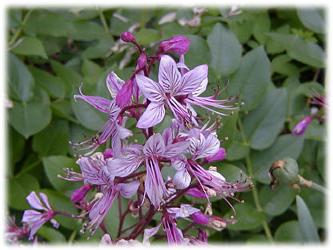

This perennial blooms in early July and blooms throughout the month. A large, wide-open bell with long curved stamens, white or pink, is its flower.Burning bush forms racemose loose inflorescences that beckon to sniff them. But this should not be done, otherwise headache, weakness and drowsiness will appear. If you touch the plant, shrouded in haze, then you can get burns with the formation of blisters and a long-term non-healing wound, after which scars may remain. In cloudy weather, the plant is completely harmless.
Ash can be propagated by seeds, cuttings and division. The seeds ripen by the beginning of autumn, it is better to sow them before winter, since they do not differ in good germination. In spring or autumn (but not summer!), You can split the "bush". Burning bush is most easily propagated by non-lignified cuttings, which must be taken "with the heel." It is advisable to root them after processing and immediately in a permanent place, maintaining a distance of 40 cm, because they do not tolerate a transplant. A plant grown from seeds blooms, as a rule, in the fourth year, and from cuttings - it can please with flowering already the next.
Despite the fact that the burning bush is a poisonous plant, it is widely used in folk and traditional medicine. It treats depression, allergies, respiratory infections, tropical malaria, scabies, epilepsy and expels worms. However, self-medication is not worth it. It is also used in cooking. In Georgia, for example, seasonings for meat and snacks are made from its flowers.
The ash tree is used both in mixborders and in a single planting. It gets along well with dry-loving plants such as daylilies, monarda, heuchera, etc. Given the peculiarity of the plant, you should not plant it near paths, especially for those who have small children and pets. Perhaps it does not need to be planted at all on your site, but to admire from a distance.
Indications for use
The rich composition of the plant makes it possible to use it for diseases of various organs of the human body:
- The gastrointestinal tract. Flatulence, gastritis, worms.
- Genitourinary system. Cystitis, nephritis, stones and sand in the kidneys.
- Nervous disorders. Insomnia, neuroses, epilepsy, asthenia.
- The reproductive system of a woman. Hormonal disruption, menstrual irregularities.
- The musculoskeletal system. Sciatica, arthrosis, arthritis. Pain for no apparent reason.
- Skin diseases. Eczema, dermatitis of various origins.
- Male diseases. Problems with potency, erectile dysfunction, male impotence.
Description of the species
The habitat of the ash tree or the burning bush is Europe, all of Asia, located in temperate latitudes, western Russia and the Caucasus. It is not in the nature of the ash tree to look for easy ways, therefore, for life in the wild, it chooses stony places among the bushes, and even on limestone soil.
Ash blossom
Thanks to the bushiness of an ash tree or dictamnus (who is more familiar with which name), he is able to create real thickets. Therefore, be prepared for the fact that thanks to the appearance of this plant on your flower garden, you will receive a piece of wildlife in addition.
Dictamnus in the wild
Ash is a perennial plant that can grow up to almost a meter in height. The ash tree got its main name for the similarity of its dark green leaves with the leaves of the ash tree. The popular name - the burning bush - was given to the ash tree for an absolutely amazing property - to burn and not burn! Such an almost Biblical miracle is possible due to the presence of a large amount of essential oils in the fruits of the plant, which can ignite from one match. Another popular name - wild star anise - was given to the ash tree for the similarity of flowers, and especially of the fruiting body (a box in the form of an asterisk with seeds) with dry ripe fruits of an actual star anise.
Dictamnus blooms almost until half of summer in white, pink and dark red. And so in all respects an original plant, dictamnus also smells in a special way - citrus.
Previously, the most famous species in landscape design, the white ash was considered, but today botanists propose to combine all known species (Caucasian ash dictamnus caucasicus, bushy ash dictamnus dasycarpus, dictamnus gymnostylis dictamnus gymnostylis and narrow-leaved ash) in one view. Therefore, we will consider them only other names of the white ash tree dictamnus albus.
Dittany
Care
Drought-resistant ash is undemanding to care in summer. Actually, it comes down to rare watering and loosening of the soil.
Watering
After planting, the ash is often watered, keeping the soil slightly damp. Abundant watering is stopped after signs of plant development have become visible. Otherwise, the roots may begin to rot.
- If the ash tree blooms in dry season, water it more often so that flowering does not interrupt.
- The flower stalks will be more powerful, and the whole plant will look colorful for much longer when watered.
- A layer of mulch will protect the soil from drying out and eliminate the need to loosen the soil near toxic bushes.
Top dressing
After feeding with complex fertilizers, the plant develops more luxuriantly, but with proper cultivation, it is more important to apply alkaline fertilizers to the soil once a year. In the spring, in the second or third year of growth, an ash tree can be fertilized with calcium nitrate, dolomite flour, or another similar agent.
Pruning
Growing an ash tree involves autumn low pruning. Some growers prefer to keep tall plants to create an expressive graphic effect in the winter garden. In this case, the dead wood is cut in early spring, carefully so as not to damage the awakening buds.
The ash is frost-hardy; in the central regions it is not sheltered for the winter. Pests, like pathogens, bypass it.
Ease of growing, minimal maintenance, graceful flowering make the plant desirable in any area.
The plant is known for the fact that the essential oil of its flowers, which have a characteristic heavy aroma, ignites when set on fire in dry hot weather. This is where its popular name comes from.
Protect your skin from volatile ash oil. It increases sensitivity to UV rays and can cause severe burns!
The genus includes several closely related species. Plants belonging to it are long-lived perennial grasses that grow throughout the southwest. Europe, Crimea, Caucasus, Turkestan and entering Siberia and Central Asia. They are absolutely winter-hardy, grow well in alkaline soil and are very suitable for sunny borders.
D. albus (I. white)
A bushy plant, in early summer, it forms spectacular spike-shaped inflorescences, consisting of white star-shaped flowers. The flowers are about 3 cm in diameter, with prominent stamens, sometimes with purple spots and stripes. After flowering, star-shaped fruits are formed, opening along the abdominal seam, which are appreciated when creating flower arrangements and dry bouquets. Leaves are leathery, dark green, up to 7.5 cm long, consist of 9-11 leaves, similar to ash leaves (where the second popular name of the plant comes from). The height and diameter of the plant is 60x25 cm.
Ash as a decoration of the landscape
What should be taken into account when planning to place a dictamnus on the site? Well, first of all, the fact that it is poisonous and quite aromatic. When planting an ash tree for permanent residence, think about whether children or pets will walk by this place. No matter how exotic it may be, you should not plant an ash tree along the paths and in the recreation area. The dictamnus will successfully fulfill its decorative function even from the depths of the flower arrangement.
Yasenets copes with the following tasks on the site with a bang:
- Serves as the peak of the entire composition in the highest part of the floral ensemble;
- Decorates flat flower beds;
- Along with other plants, it participates in creating the effect of relay flowering;
- Will fit into any composition in which pinker tones prevail;
- Will complement any group of plants;
- Can act as a background for other colors;
- Looks confidently as a single landing;
- Fits organically into rockeries and juniper thickets;
- Is on friendly terms with krasodnev, kachim, limonium, geyher, iris;
- Lives in one place without transplant for up to 10 years;
- It will stay in a vase for 4 days;
- If you love a rustic style of decoration, then the ash tree can be the most striking accent in it.
In the flower garden
Description
Usually blooms in June with purple inflorescences with pronounced dark veins.
But I also met white flowers:
Ash contains a lot of essential oil, in extreme heat it evaporates, you can set it on fire with a match or a lighter, and the plant will not get anything from this - hence the name burns. the color of the flame is bluish. The photo could not be taken, since the combustion takes place almost instantly.
Frost-hardy, sun-loving (does not bloom in the shade), unpretentious, but does not like stagnant water, cunning. If you pick a bouquet, put it in the room at night, the next morning there will be all the signs of poisoning.
That year, for the first time, a neighbor received very severe burns on her hands by cutting off seed pods, and the same thing happened to another friend of mine. Apparently. in this hot summer, a large amount of essential oil has been produced. When it got on the skin, it caused a second-degree burn. Both women were forced to go to dressings, and on their skin on their hands, at first all in blisters, then crimson. it was scary to watch.
Landing in open ground
The ash is usually grown by the seed method, but in order to achieve high germination of seed, it is necessary to keep in mind some subtleties that are known only to professional gardeners:
- The seeds must be harvested before they are ripe, otherwise they will simply shoot out of the seed pod.
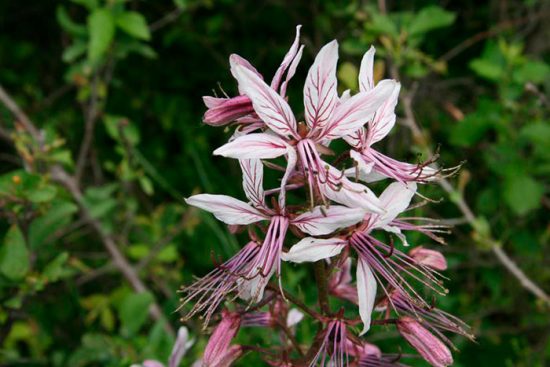

Planted ash trees with seeds
- It is better to sow seeds almost immediately after harvesting, since they are not very well stored. Usually, the sowing of seed takes place in the autumn-spring period.
- Sometimes it happens that the seeds sown in the fall will sprout only in the spring, so it is necessary to mark the area sown with ash trees.
- Densely sprouted seeds must be thinned out without fail (the distance between them must be at least 20 cm).
By the way, sometimes the plant is grown by another method - by dividing the bush. But the result of gardeners is not very impressive: the plant is often sick and does not grow well.
When choosing a site for planting an ash tree, it is not necessary to give preference to sunny or semi-shady places: the plant feels great in any part of the garden. It is more important to carefully select the soil for the ash tree. The best option for him is neutral / alkaline soil (by no means poor).
Advice. The plant is very afraid of moist soil, therefore, if the groundwater is close to it, it is imperative to drain it so that the root system of the ash tree does not get wet.
Sowing seeds is carried out either in a small splitter, or in a greenhouse designed specifically for growing seeds. The distance between individual seeds should be, as mentioned earlier, about 15-20 cm. Since the plant will begin to bloom only by the 4th year of life, transplantation to the main place is carried out 3 years after sowing the seed.
Useful properties of ash
Diktamnus has a valuable biochemical composition that is beneficial in the treatment of a number of ailments. The rich composition of the perennial allows you to use it for diseases of various organs human body:
- Improves the functioning of the stomach, the entire intestine, reduces the formation of gases, accelerates their exit from the body.
- It has anti-inflammatory properties, acts as a diuretic for diseases of the bladder, urine drainage system. It is believed to be able to dissolve kidney stones.
- Eases the course of neurosis, post-depression conditions, treats insomnia, asthenia.


- Normalizes hormonal levels (production of sex hormones), facilitating the course of menopause, eliminates regulation disorders. Tidies up male sexual function.
- Relieves joint pain, pain in sciatica, arthrosis.


- It has an antiseptic, wound-healing effect on skin diseases. Inhibits the activity of pathogenic bacteria, microorganisms.
- Has an antihistamine effect.
Homeopathy uses the "Dictamnus albus" for the treatment of the regulation of menstrual cycles in women, intestinal disorders.
Landing
In the shade, the plant will be oppressed. At best, the perennial will survive, but not bloom. For cultivation, choose an area protected from cold winds. Ash prefers alkaline dry soil. It develops poorly on neutral or slightly acidic. On stony soils, loose and loose, it gives the most lush flowering.
The hole is dug at a distance of 50-70 cm from other plants. So the ash tree will develop freely, without interfering with other plantings, and the grower will have less contact with him.
- For planting, add 300-500 g of lime to the hole, mixing with soil, humus and sand in a ratio of 1: 2: 2.
- No melt or rainwater should collect at the landing site.
- A good place is the western or southern slope.
- Ash trees are planted in cloudy weather.
- After planting, large stones are placed near the hole, which, heating from the sun, will share heat with the plant.
Beneficial features
Despite the danger of getting burned by touching or smelling the ash tree, it is collected for the preparation of collections, infusions and decoctions. The chemical composition of the plant is rich in vitamins and minerals, which are recommended for the treatment of a variety of diseases and the elimination of their symptoms. The bush herb contains alkaloids, bitters, bergapten, furocoumarins, saponins, and essential oils. In the horses of the ash tree, among other things, sitosterols and fatty acids are present.
The balanced composition of trace elements and nutrients is beneficial for the body as a whole. In addition, white ash, due to its beneficial chemical composition, has a number of beneficial effects, it has a diuretic, anthelmintic and sedative effect. It is used to improve and normalize the menstrual cycle in women. Useful for algomenorrhea, oligomenorrhea.
Used for external use in case of skin problems, with deprivation, baldness, eczema. An irreplaceable plant for bloating, flatulence. The ash tree is believed to be able to cure sexually transmitted diseases, such as vaginitis caused by Trichomonas.
Cautions for using Caucasian ash
This plant is toxic because it is very high in alkaloids, volatile essential oils that can cause irritation. Ash also has a photosensitizing effect. Often people are poisoned with this type of plant, it can be contact or remote, the ash tree works up to two meters.
What are the symptoms that a person has poisoned with Caucasian ash? Severe dermatitis appears, which lasts for several days, while the skin becomes very inflamed, there is a burning sensation and itching. After two days, edema may occur, then bubbles filled with liquid inside. Then all the signs gradually subside, where there were bubbles, dark crusts can form, they disappear only after 10 days.
With severe poisoning, a person has a general intoxication in the body, severe pain in the head worries, and the body temperature rises. In this case, it is imperative to thoroughly wash the affected skin with water, preferably with soap, so that dermatitis does not occur. If the skin is still affected, then it is recommended to make lotions based on a solution of potassium permanganate, wipe the affected area with an alcohol solution. When the blisters open, they must be covered with a dressing with synthomycin ointment.
Ash tree application
Despite all its negative qualities, the ash tree is popular in folk medicine, because decoctions and infusions are prepared on the basis of it, which have a positive effect on the human systemic organs. The plant is especially useful for the genitourinary system, it has a diuretic effect, it also helps to regulate the female menstrual cycle, the infusion is used for chronic cystitis and kidney disease.
With the help of it, you can get rid of the bloating that occurs in the abdomen, and also destroy worms.
Ash-tree infusion is the best remedy for gastritis and flatulence. It is very important to maintain proportions when preparing it. It is also used for insomnia, epilepsy, severe fatigue and asthenia. With the help of it you can tone the body, cheer up the body. For sciatica, the best remedy is an aqueous ash-based extract.
A decoction based on ash root is used for dermatitis and eczema. With it, you can cure diseases of the reproductive system, for example, Trichomonas vaginitis.
Choosing a place in the garden and preparing the soil
Ash grows well in sunny places and in light shade, because in nature it is found mainly at the edge of the forest. Dictamnus is undemanding to soils, it can grow on poor sandy soils, and tolerate excess moisture. But in order for the plant to maximize the beauty and splendor of flowering, it is worth choosing fertile soils with moderate moisture.
Suitable loam or sandy loam filled with humus and sand, with the addition of rotted manure or compost. With a close occurrence of groundwater, drainage (crushed stone, expanded clay, pebbles and sand) must be poured into the planting holes.
In one place, an ash tree can grow for 20 years, so you need to prepare a site for a flower with great care.
Contraindications for use
The substances that make up the ash tree have abortive drugs, therefore it is strictly forbidden to take herbs of the Yasenets genus during pregnancy, during lactation. The use of preparations containing ash-grass raw materials is contraindicated in case of:
- heart disease;
- diabetes mellitus;
- chronic diseases of the liver, kidneys, urinary tract;
- autoimmune diseases;
- ARVI;
- increased acidity of the stomach;
- diseases accompanied by disorders of the respiratory system;
- allergies;
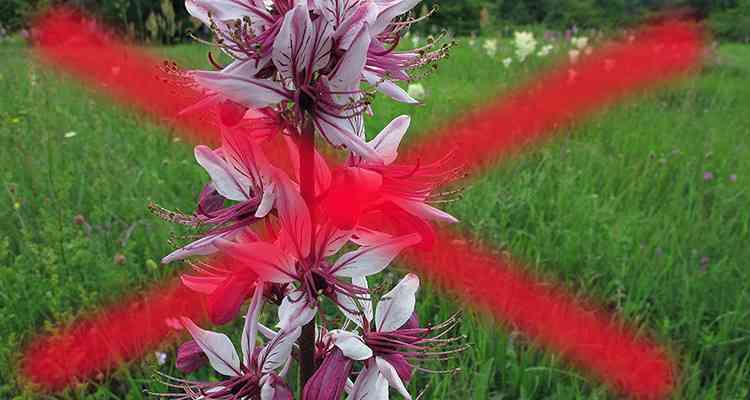

Exceed the dosages indicated in the prescriptions, abuse the use of drugs unacceptable.

